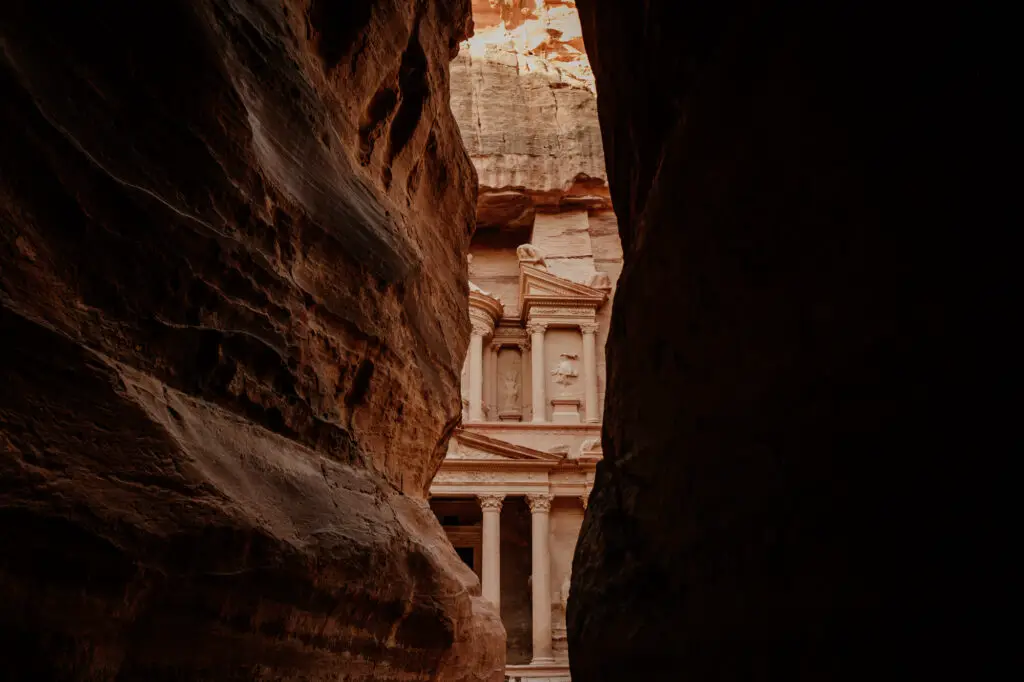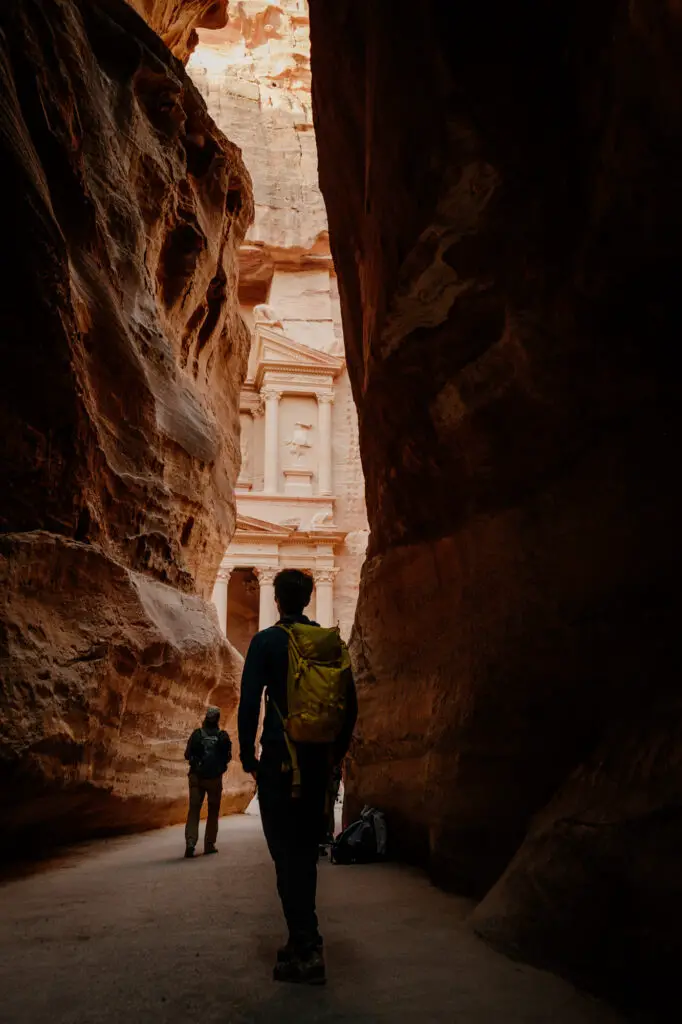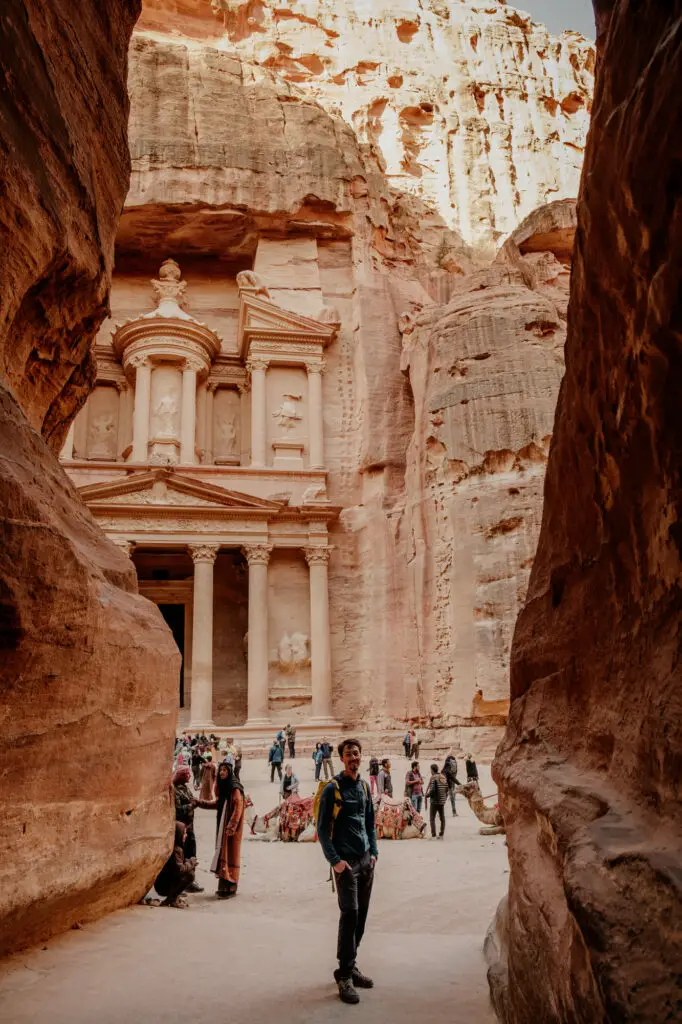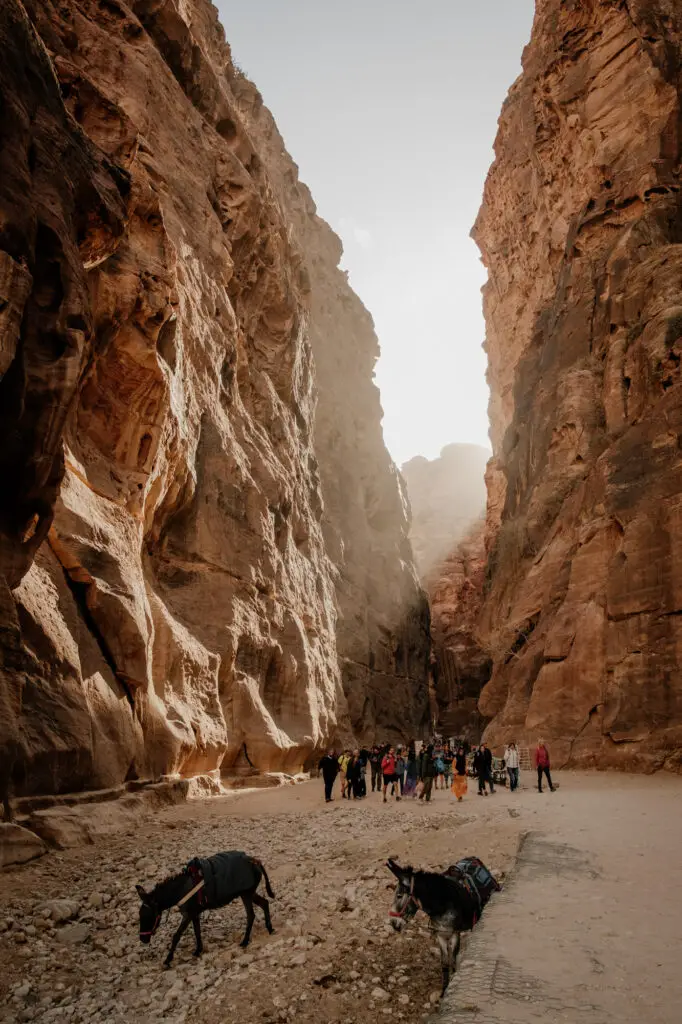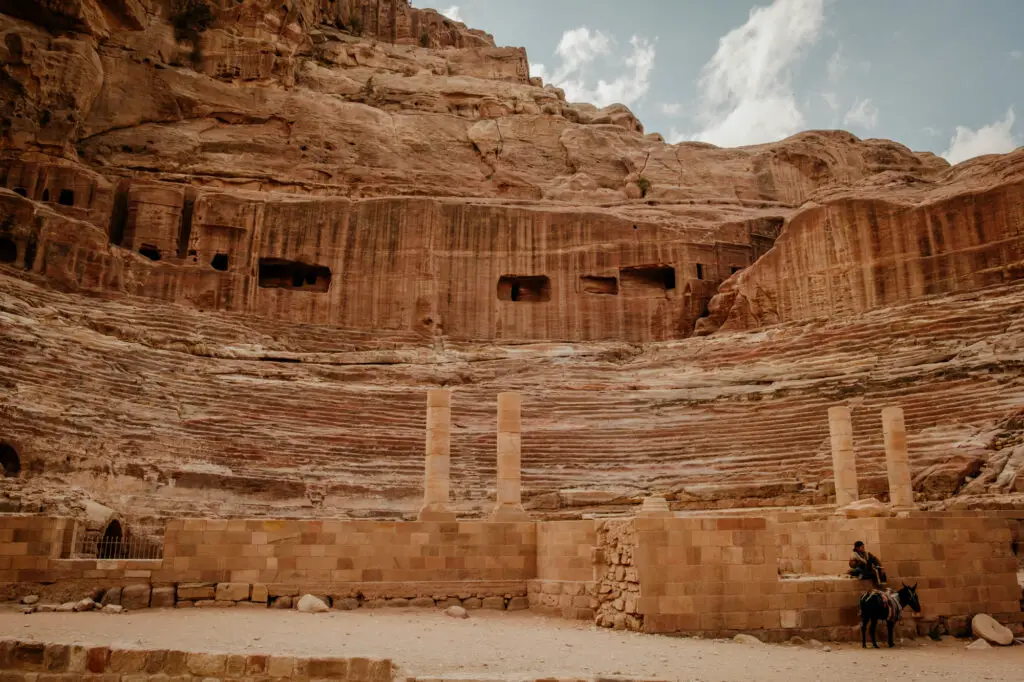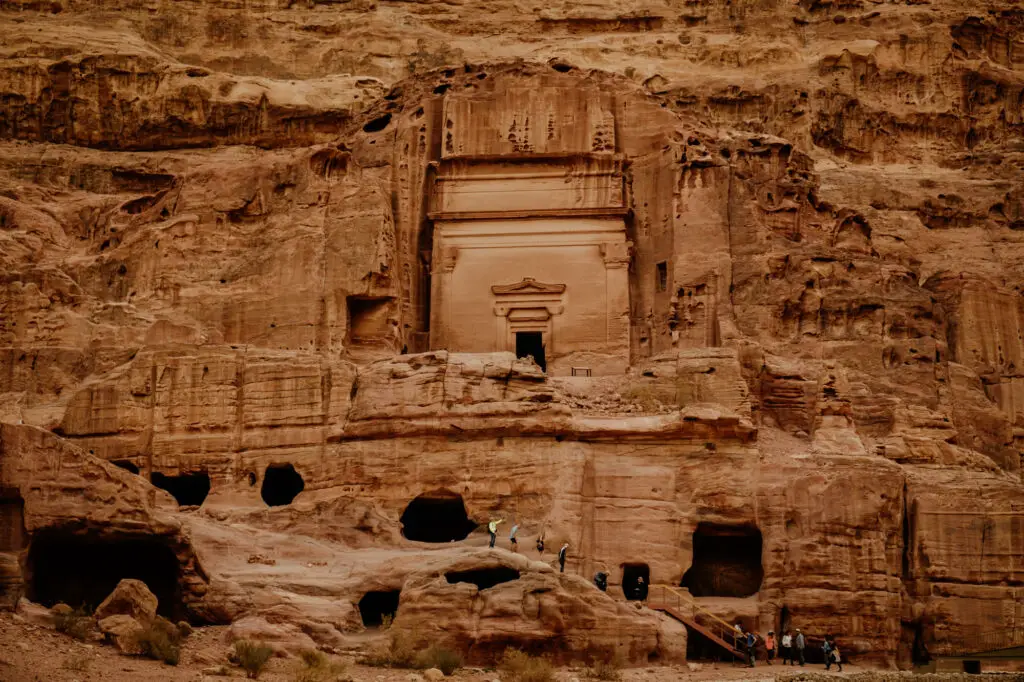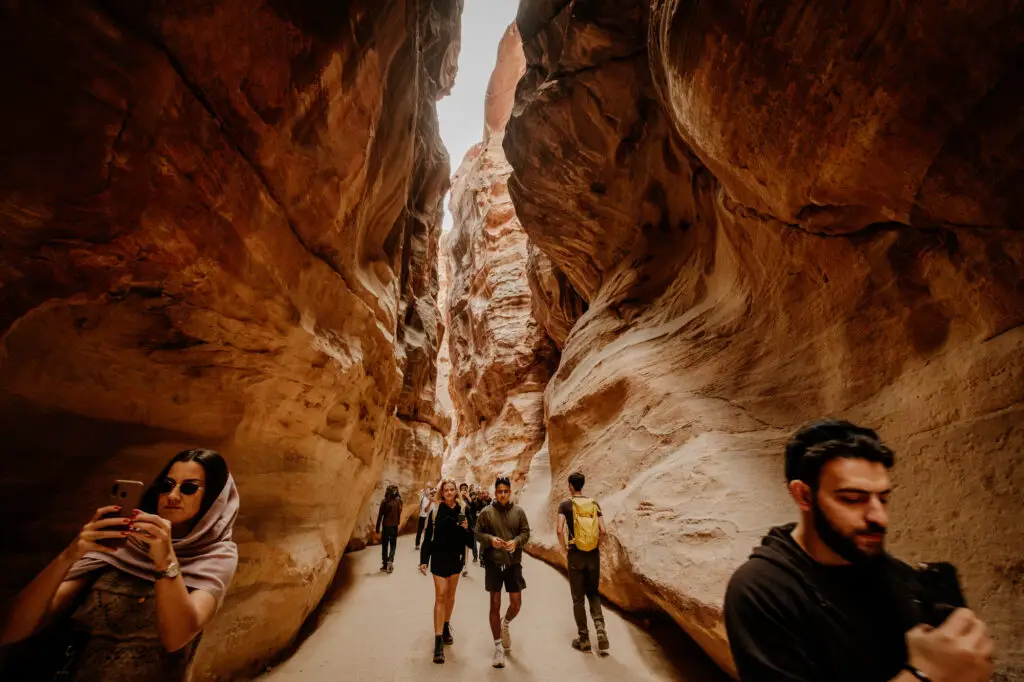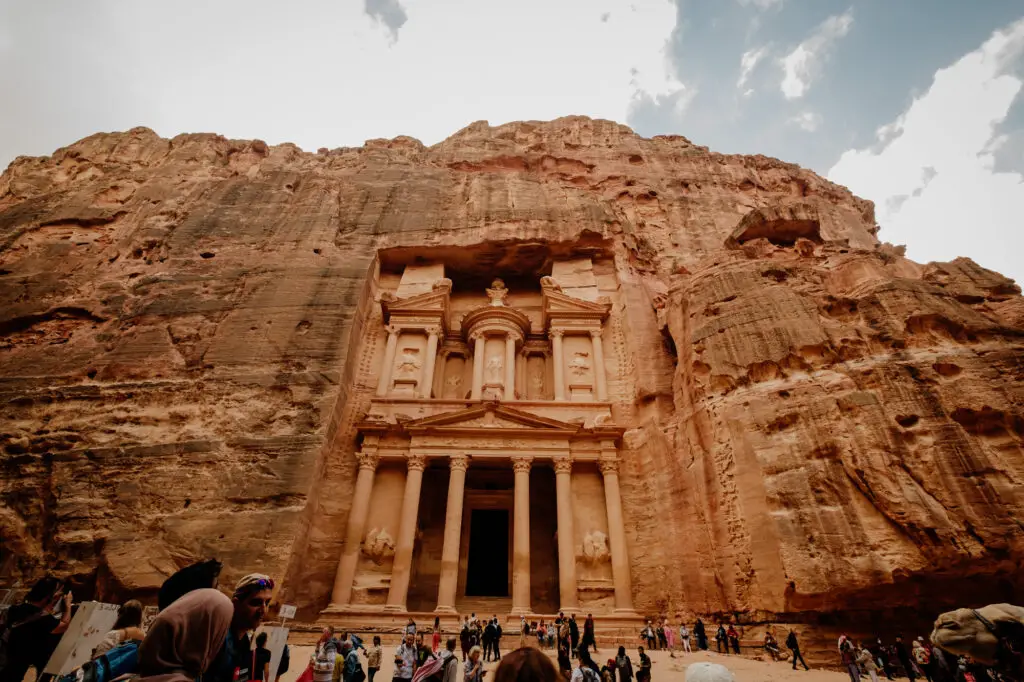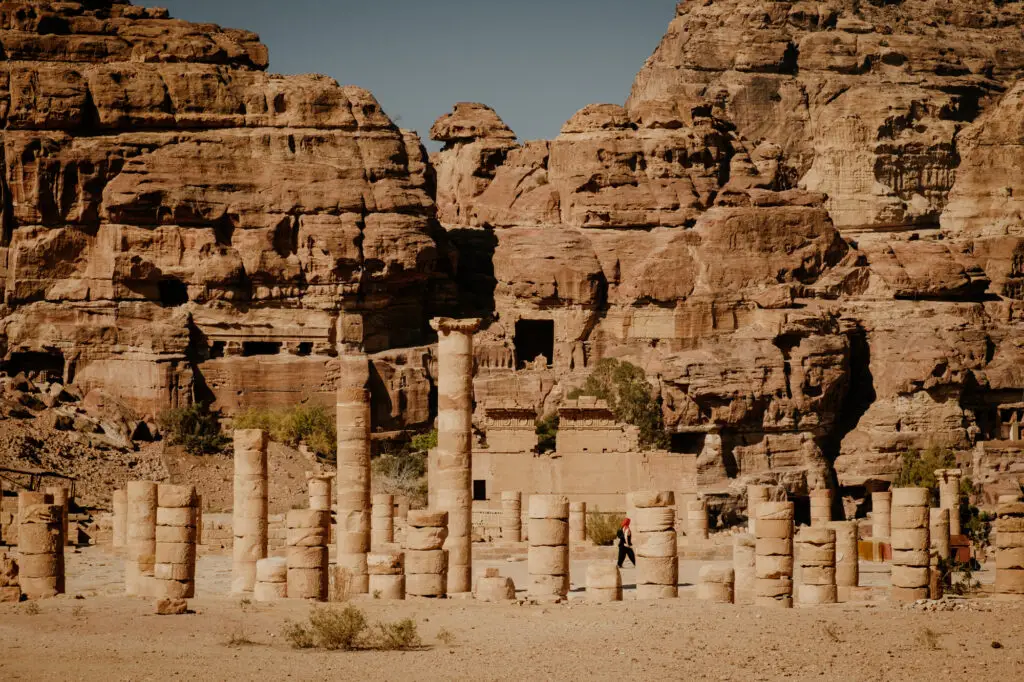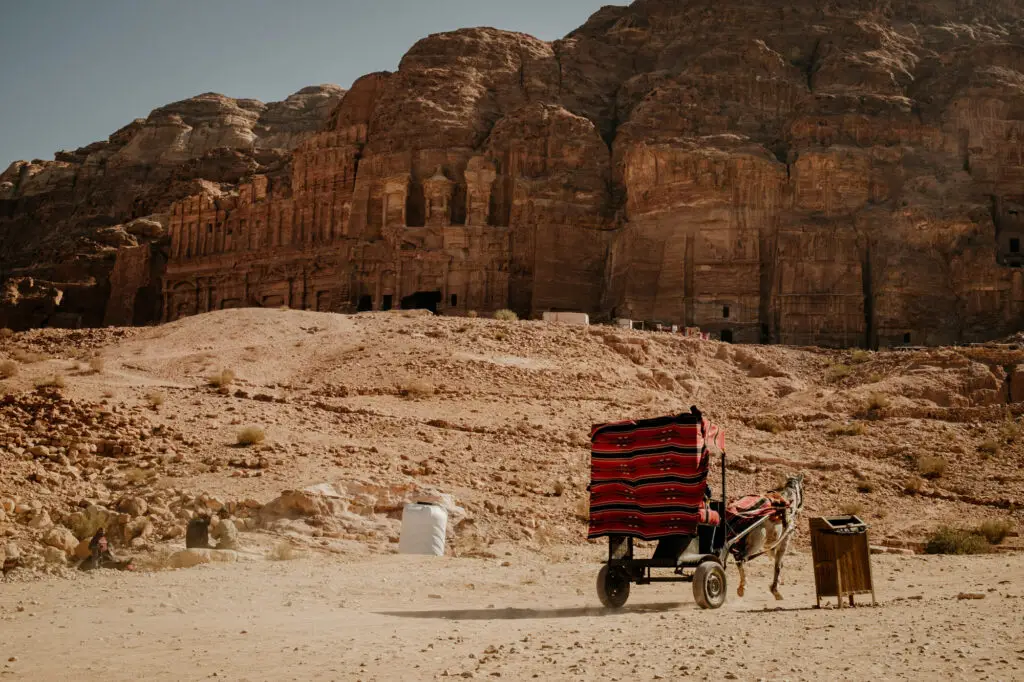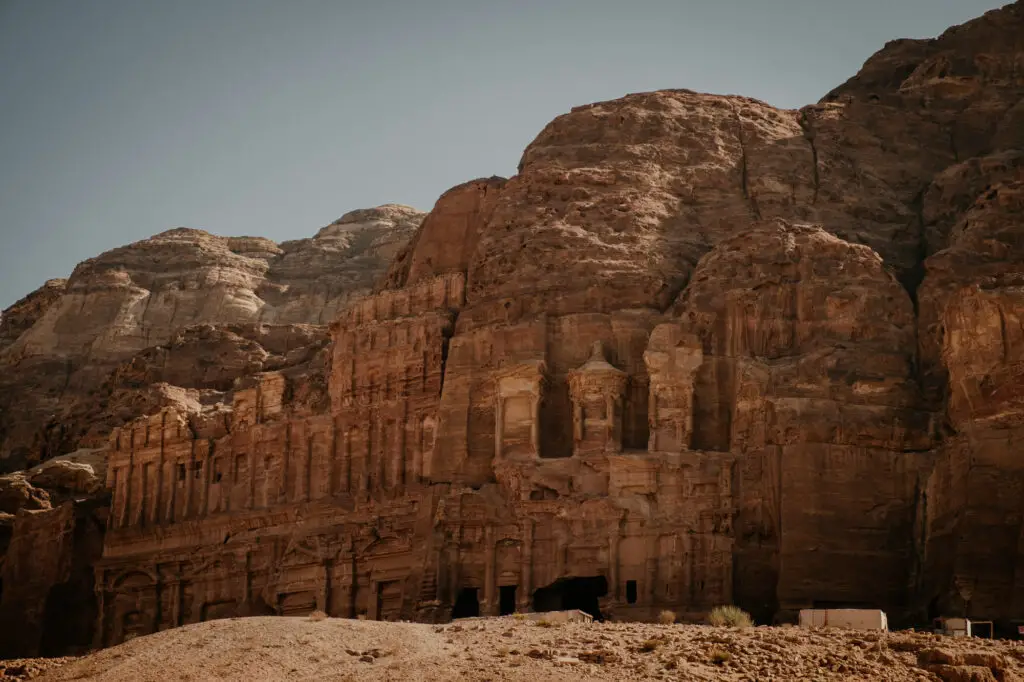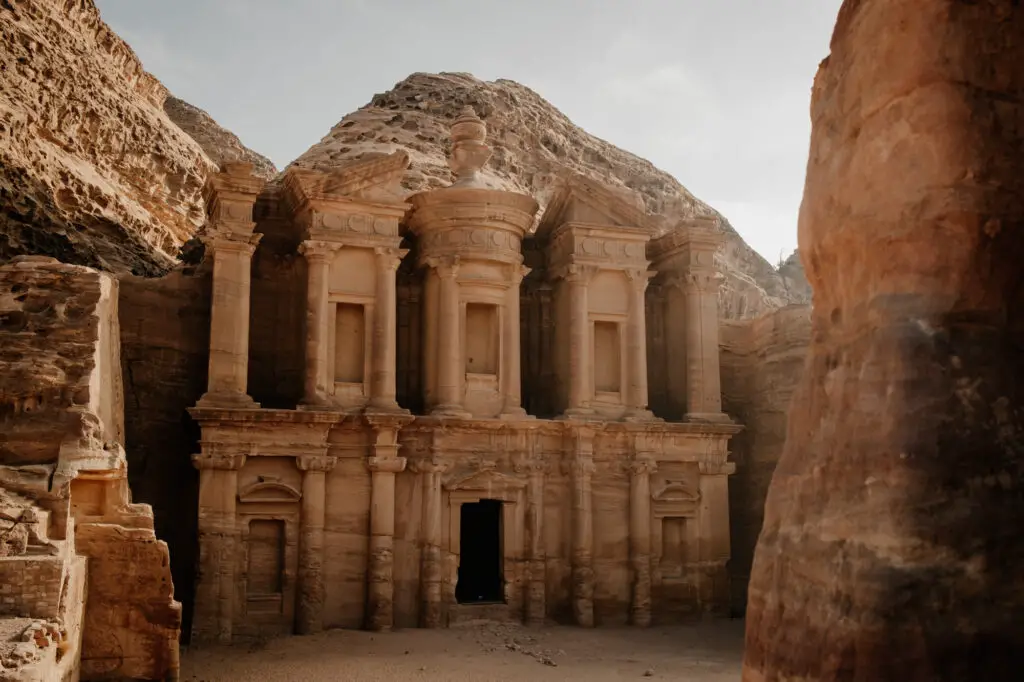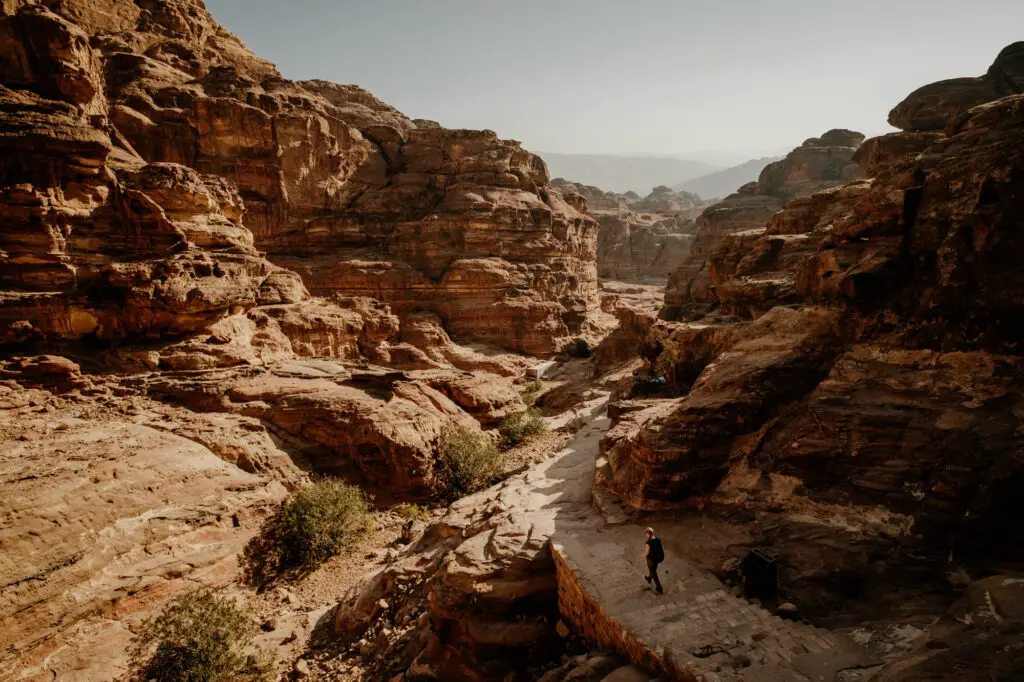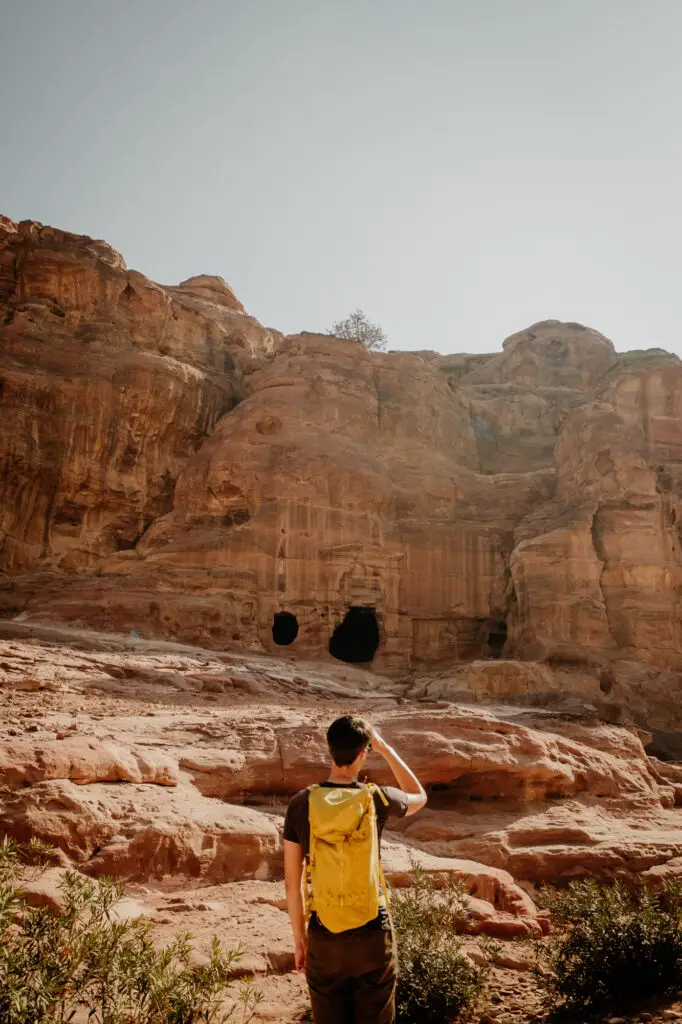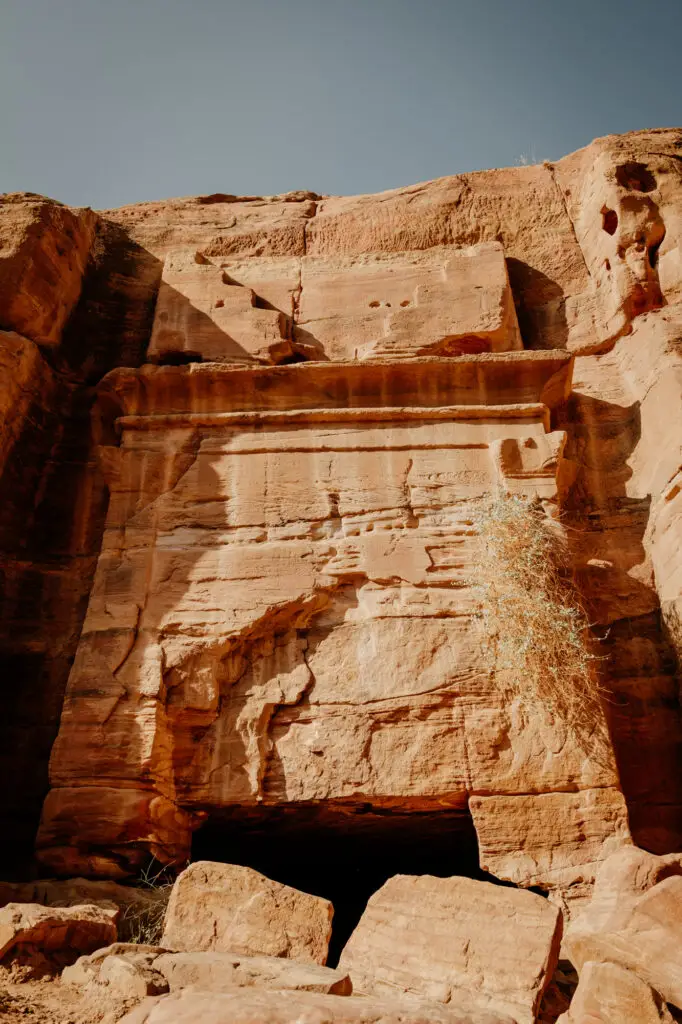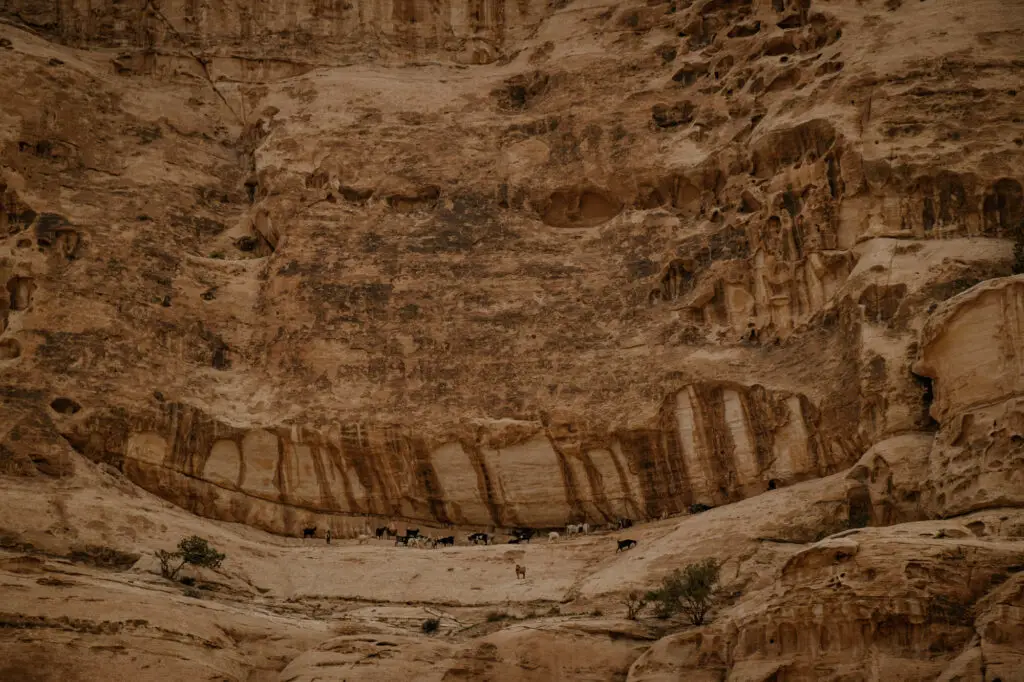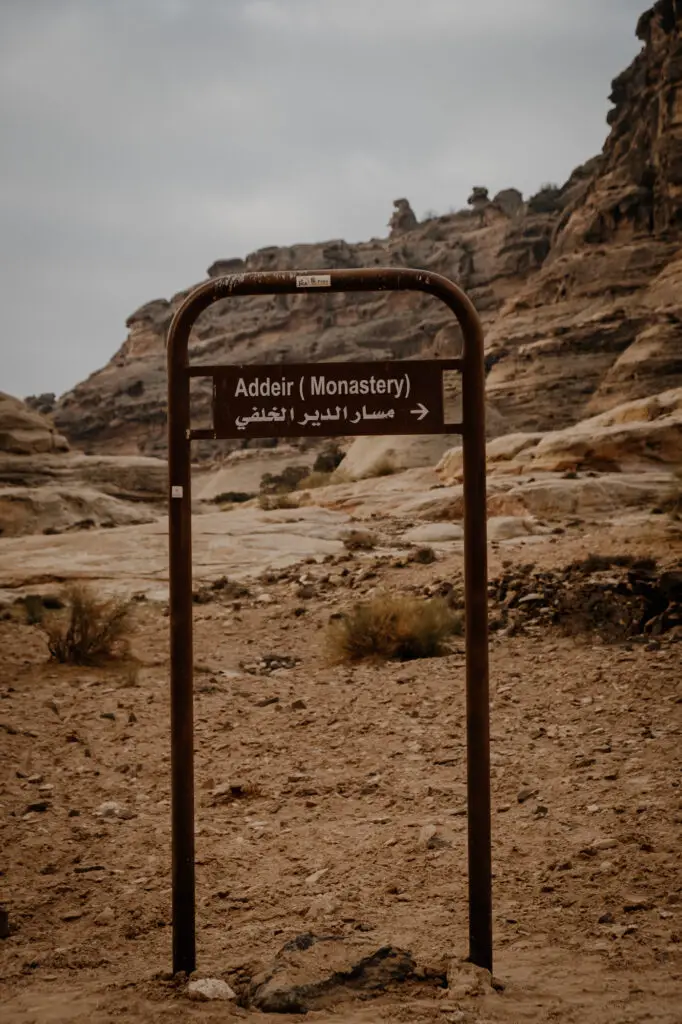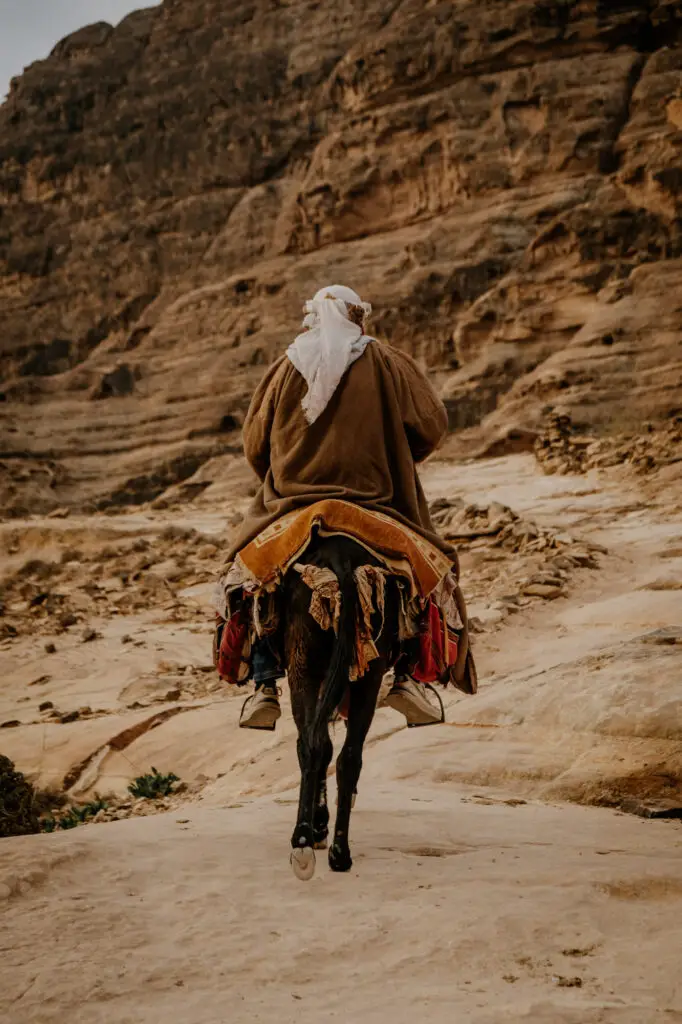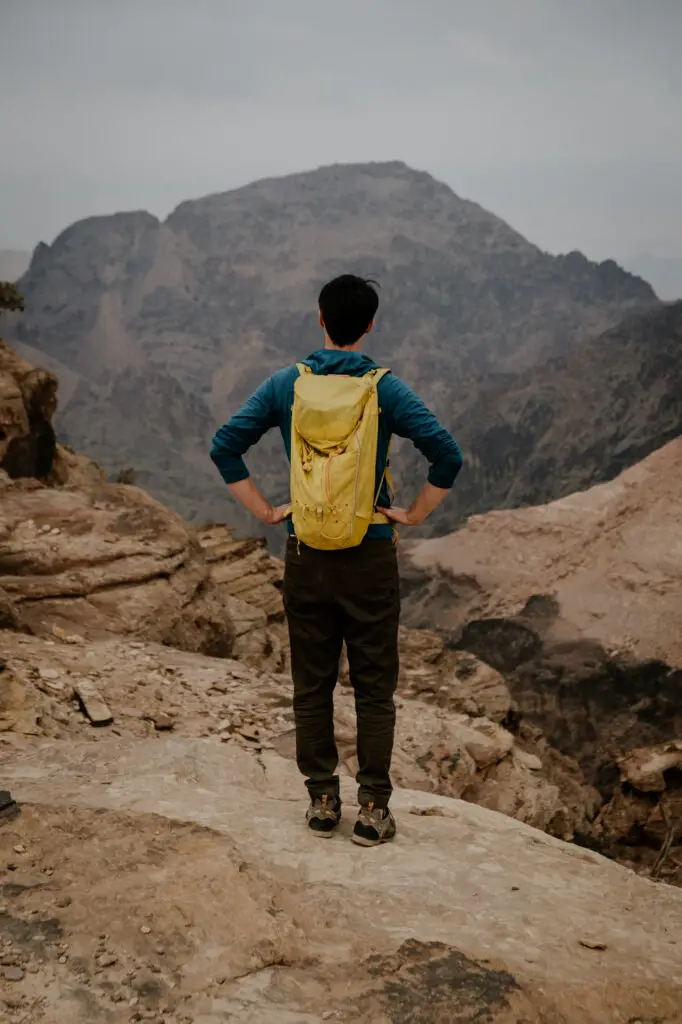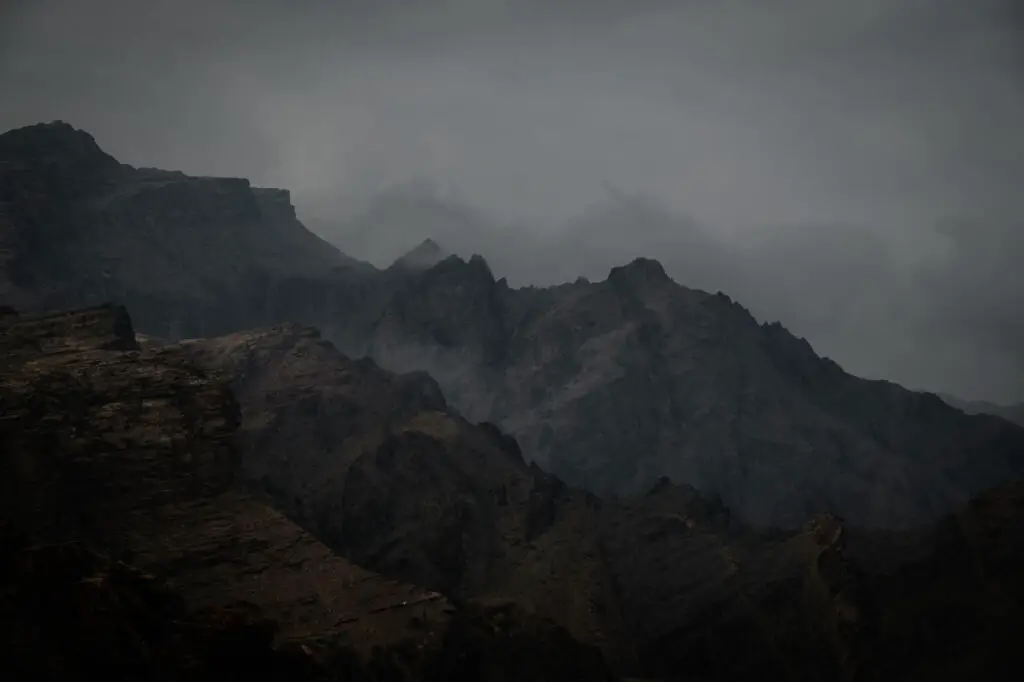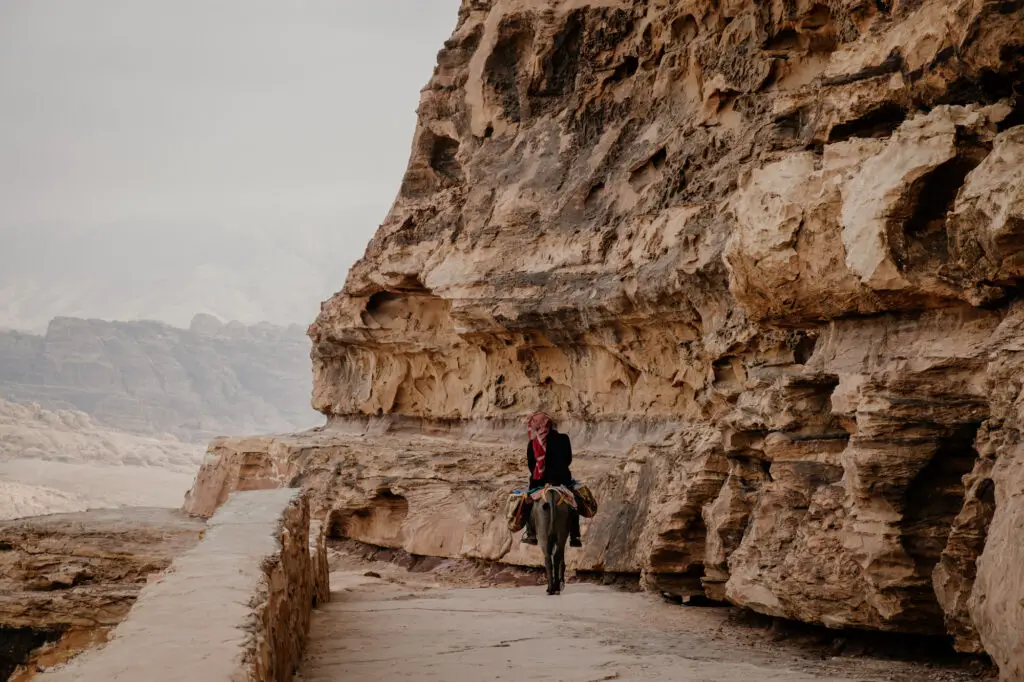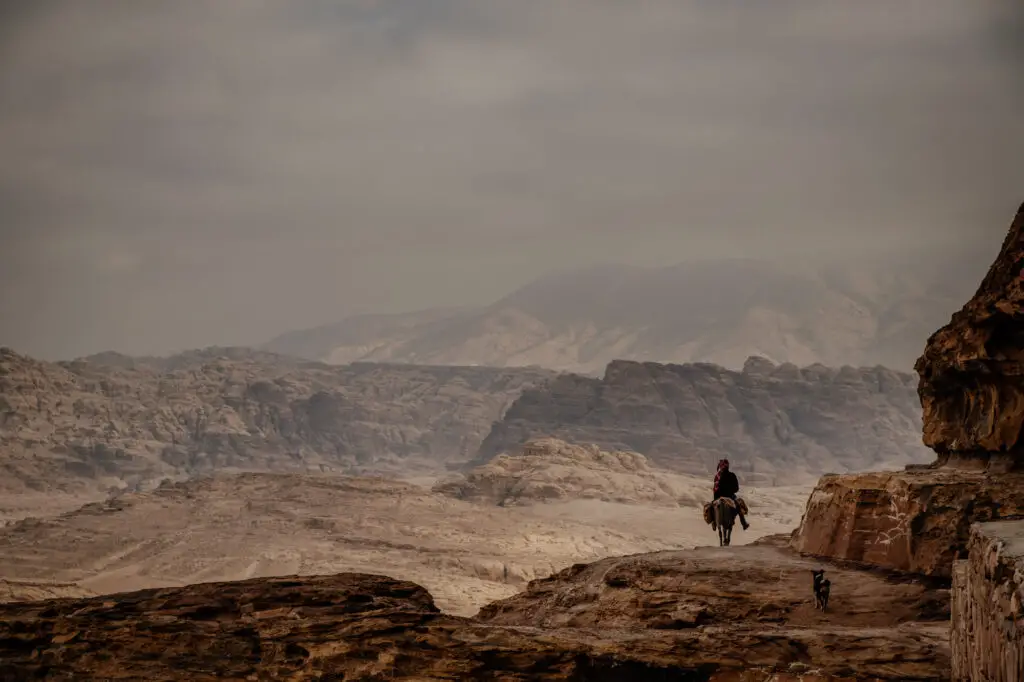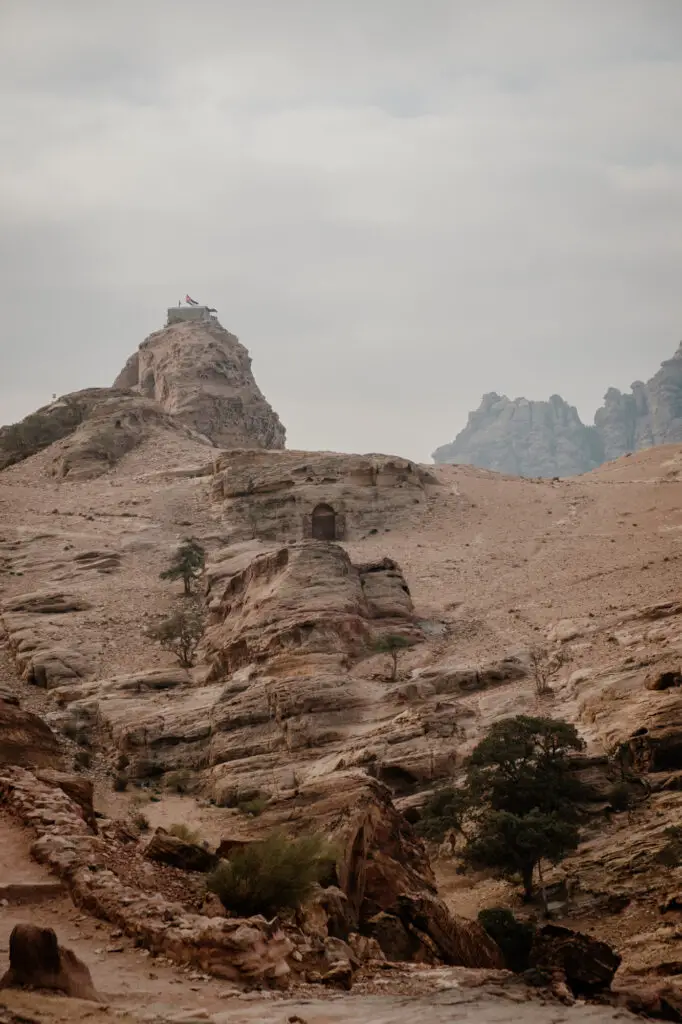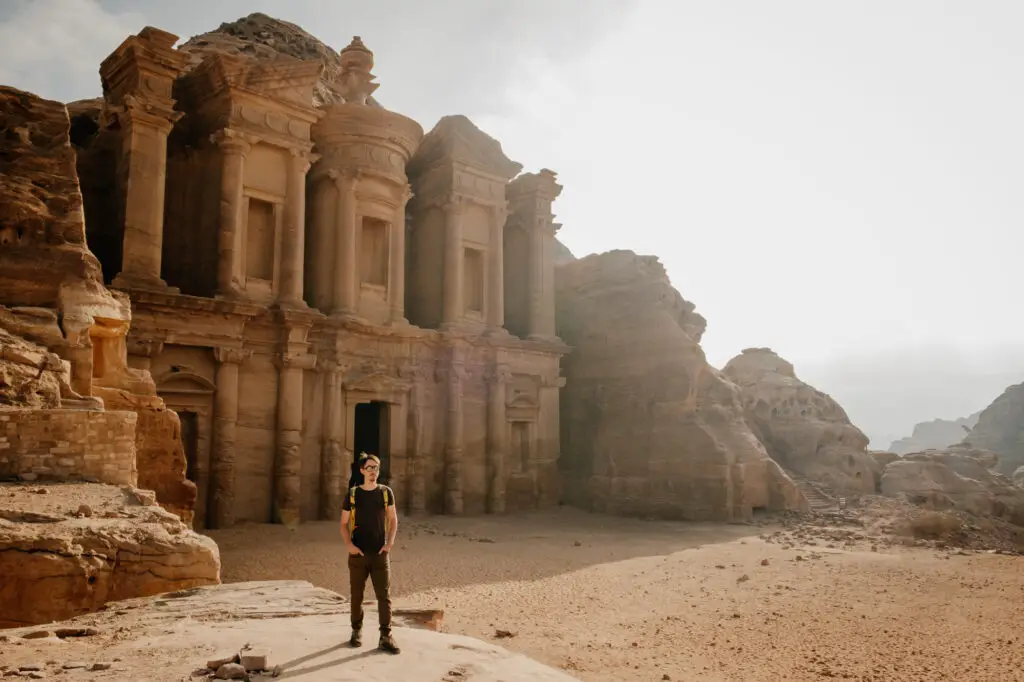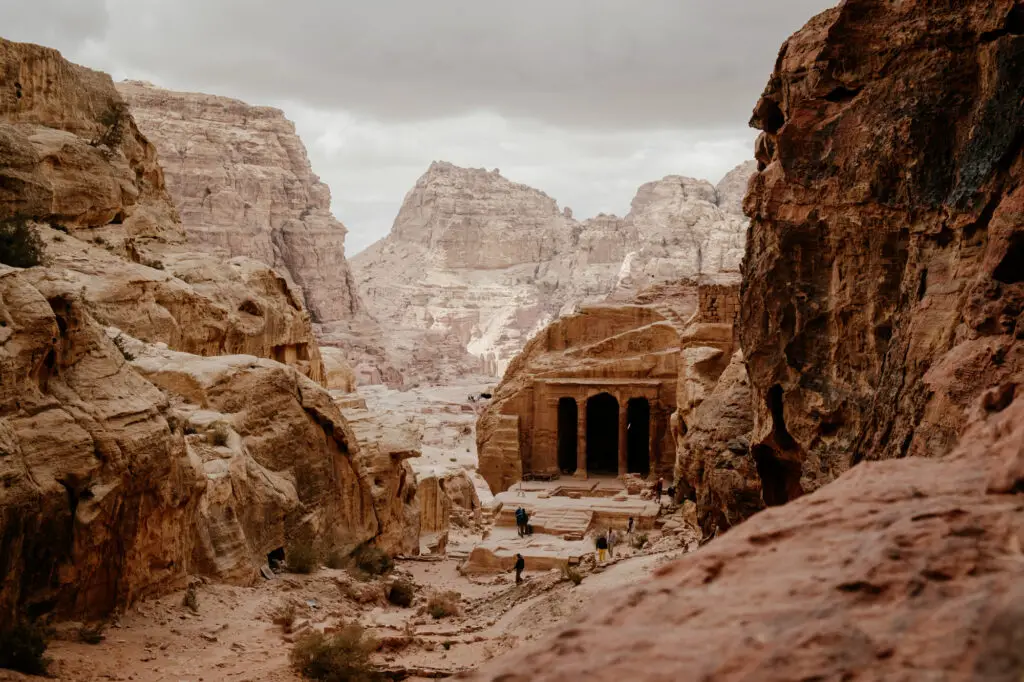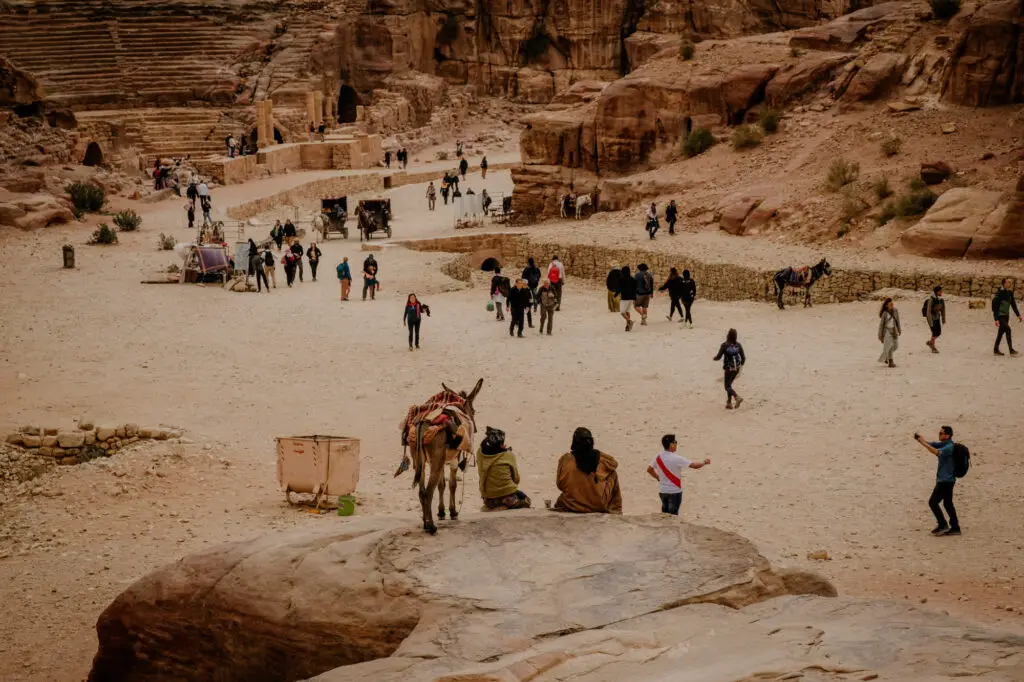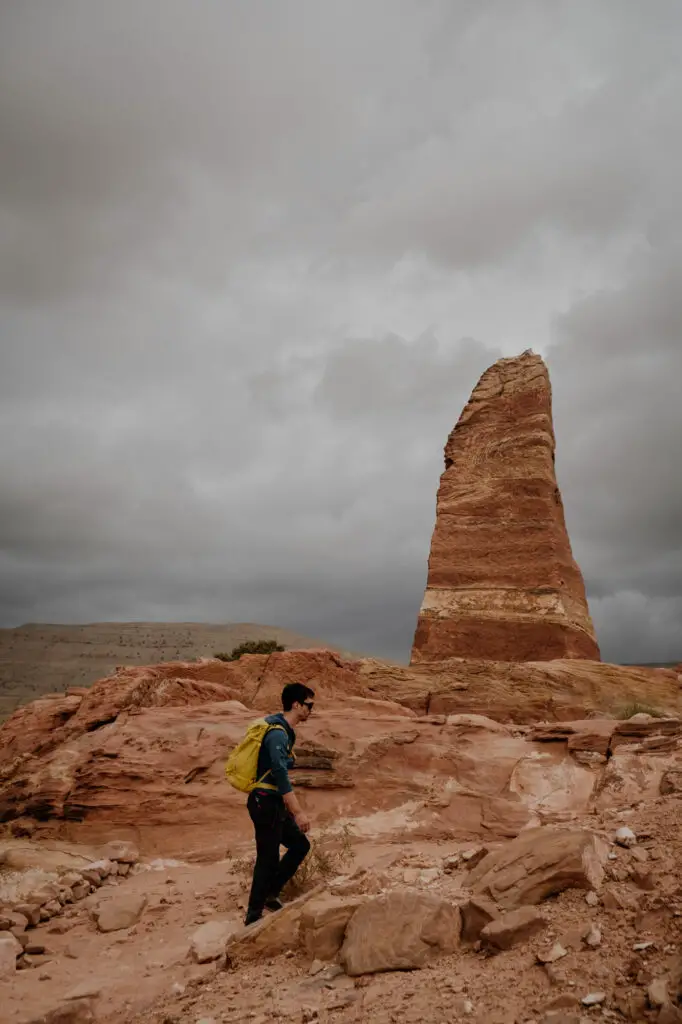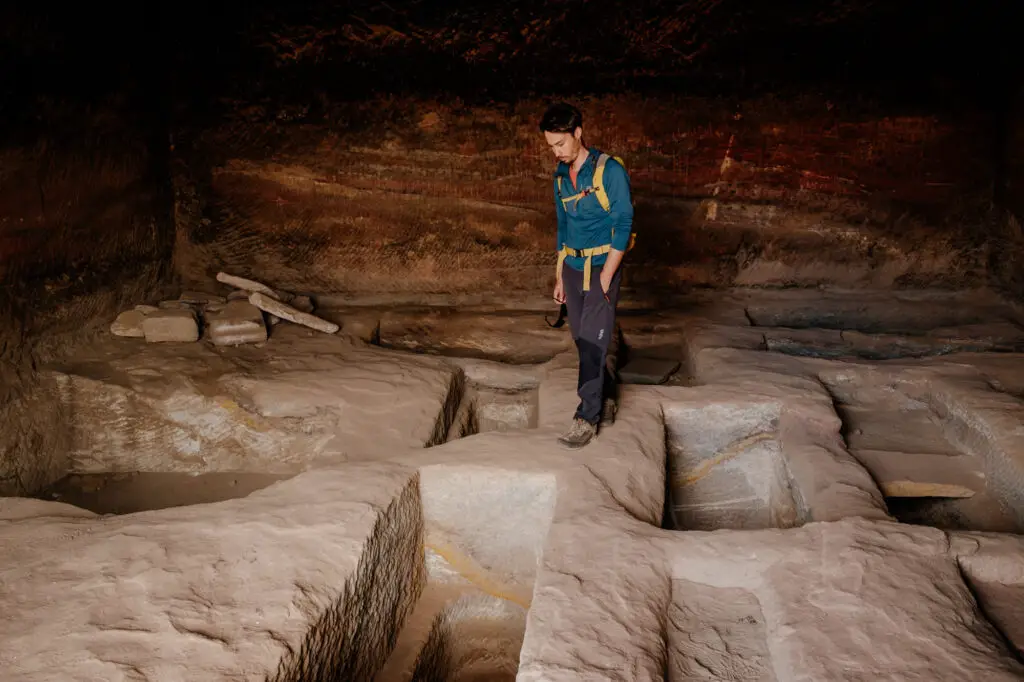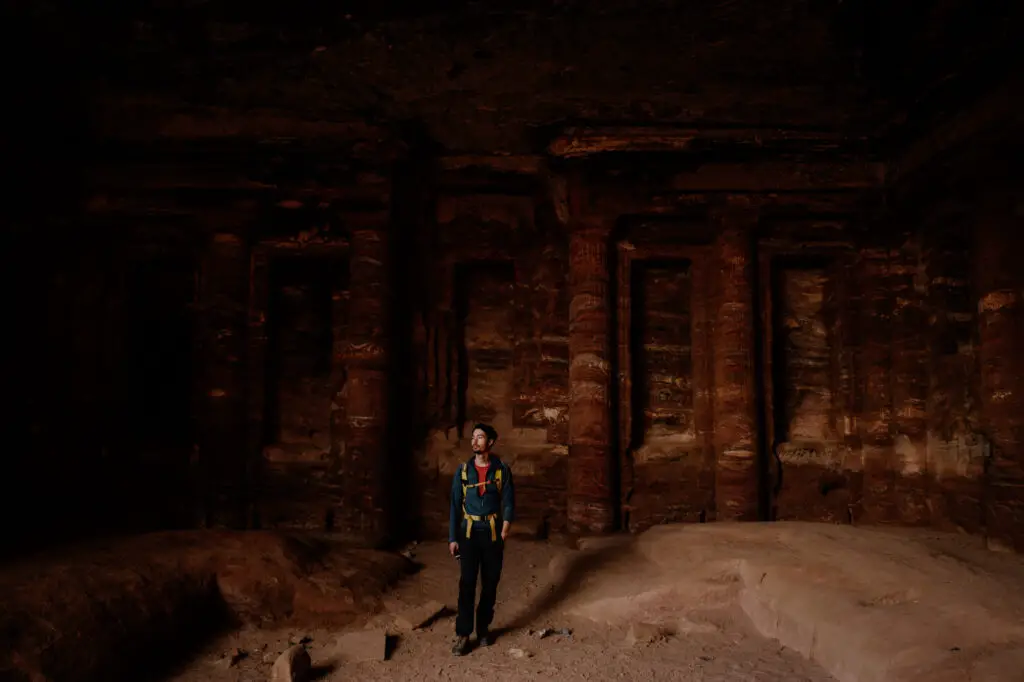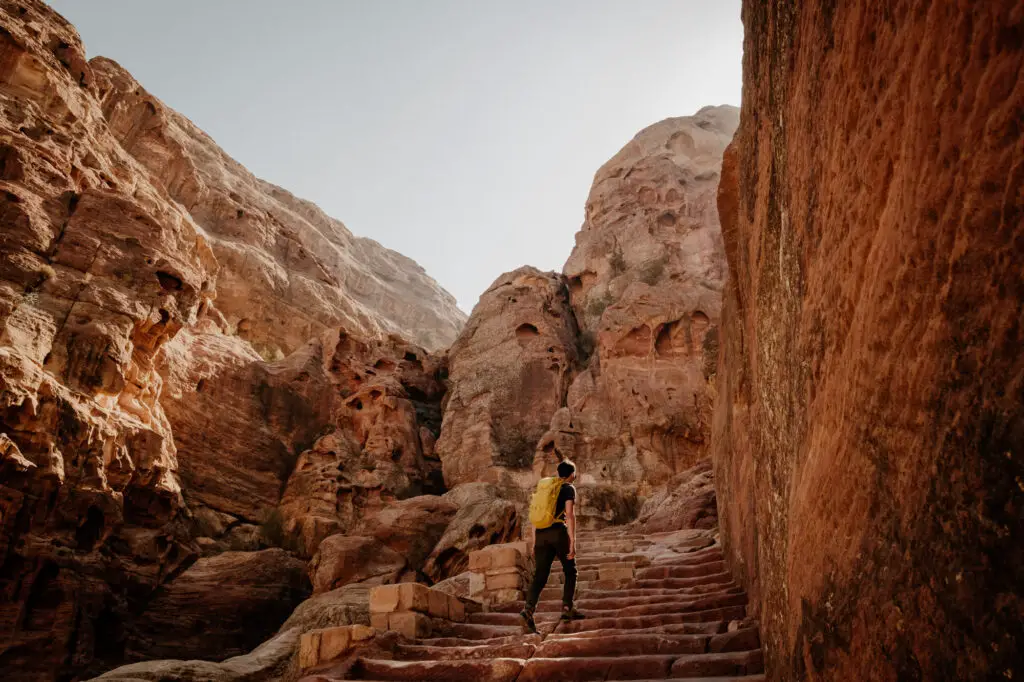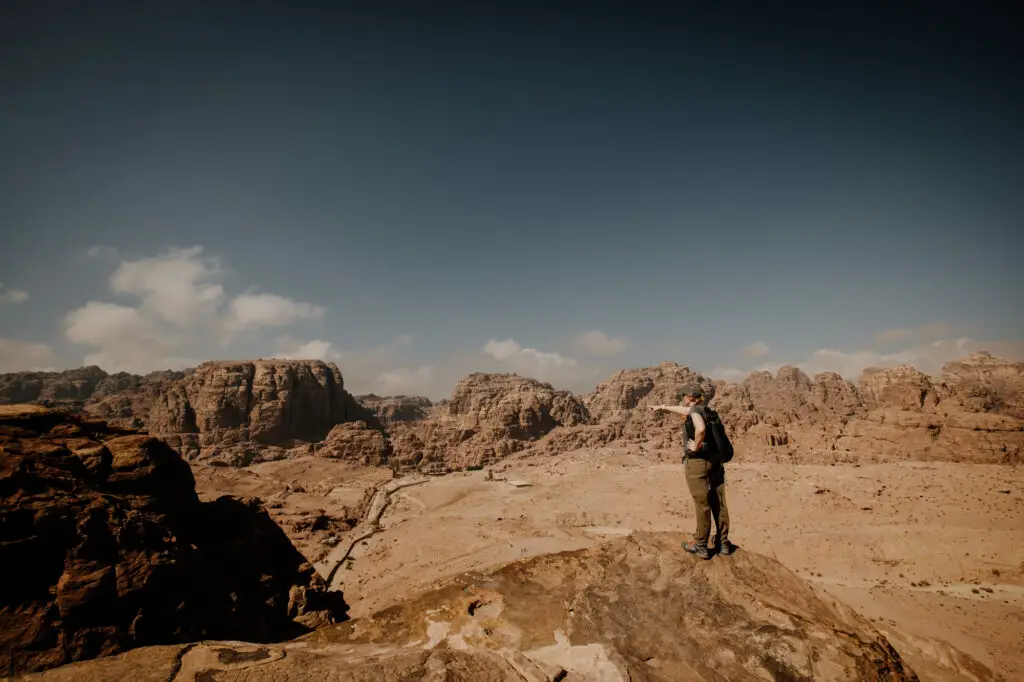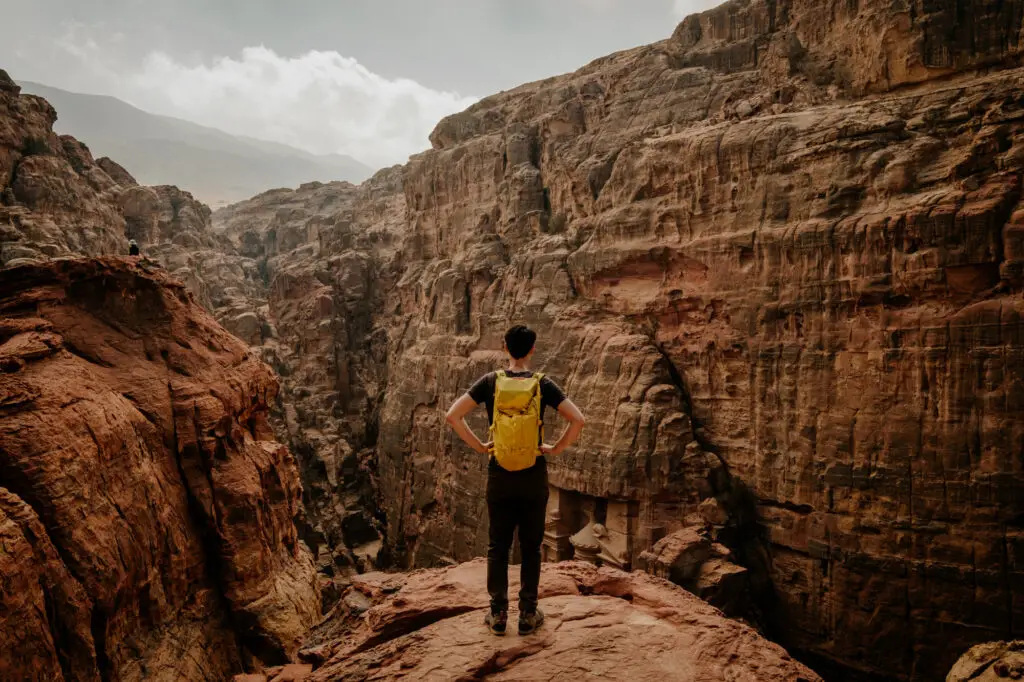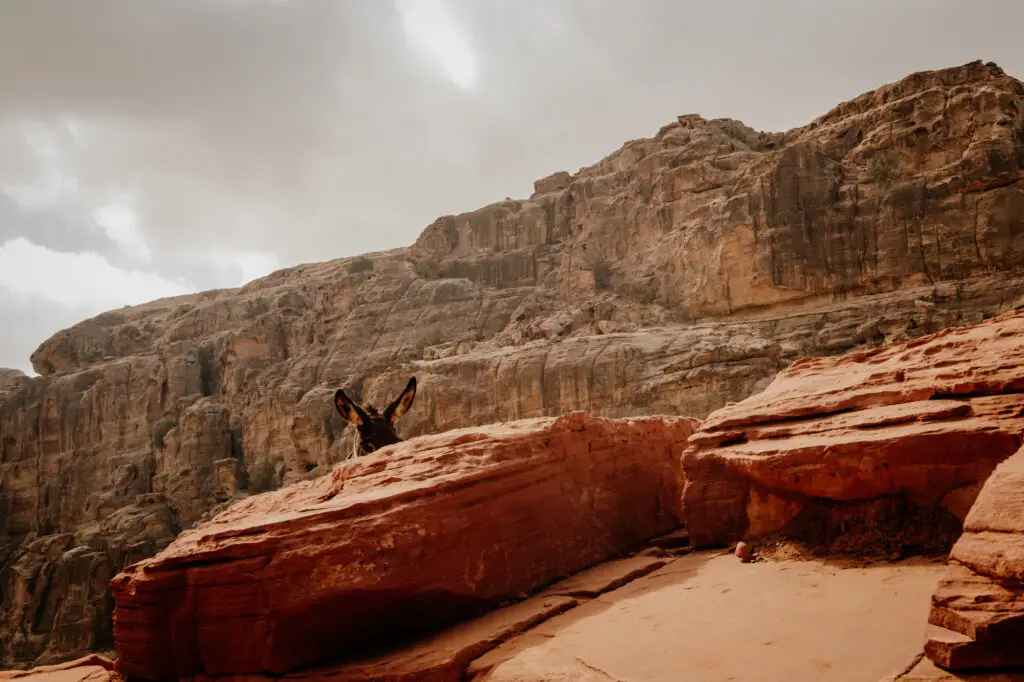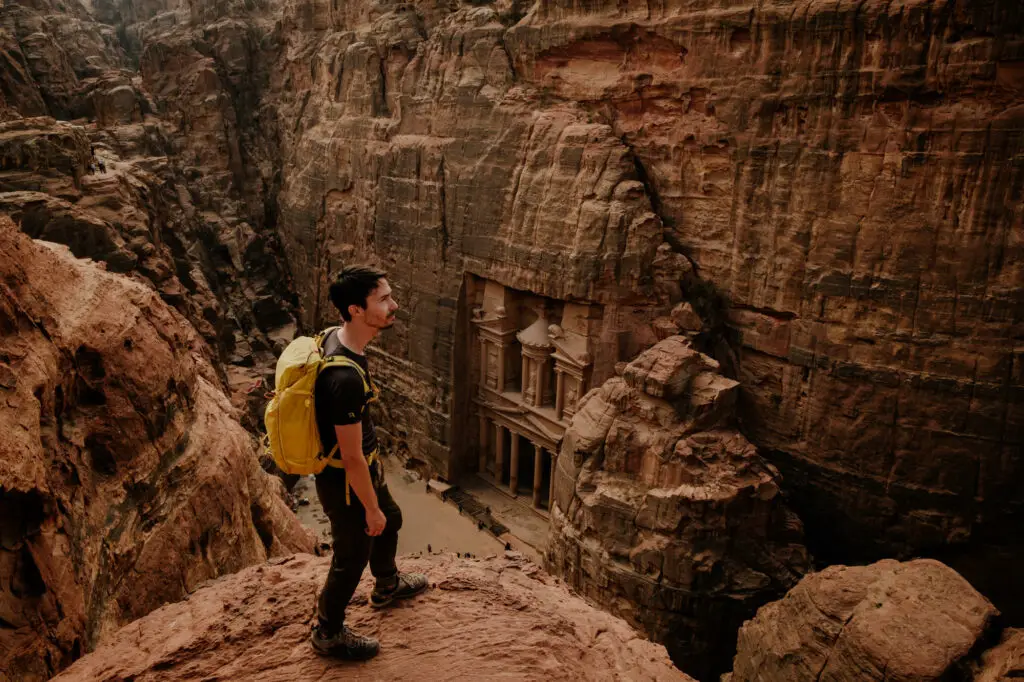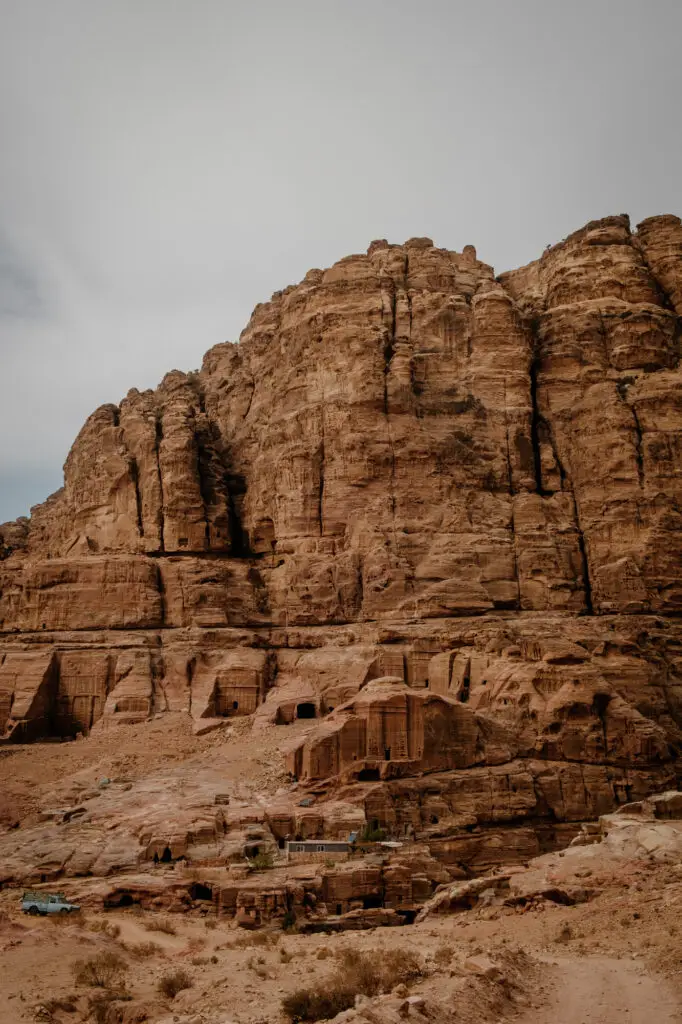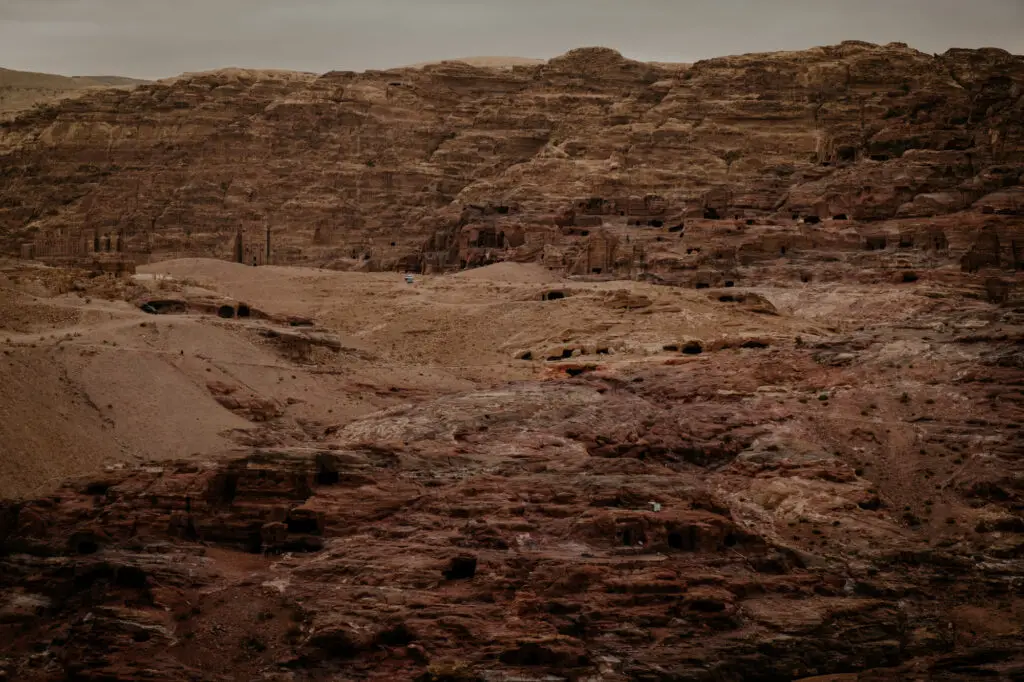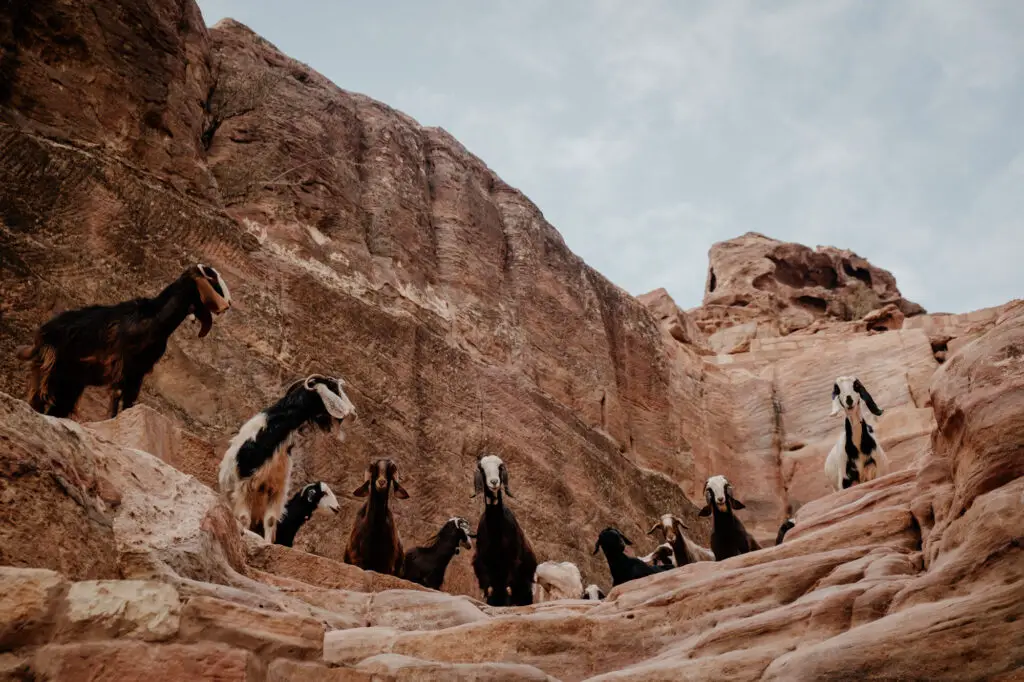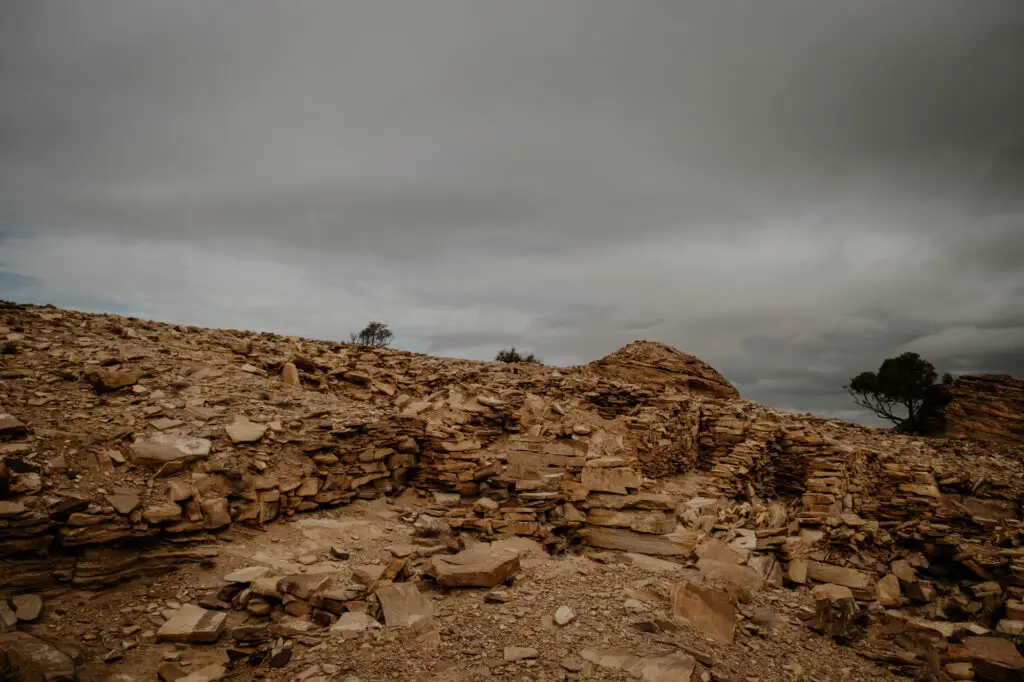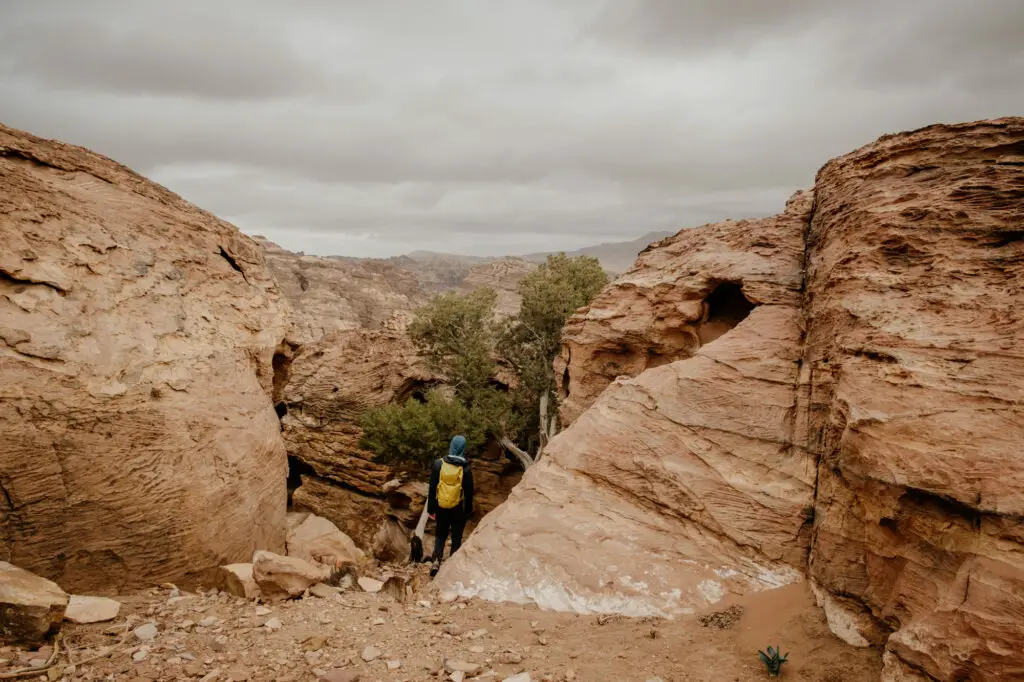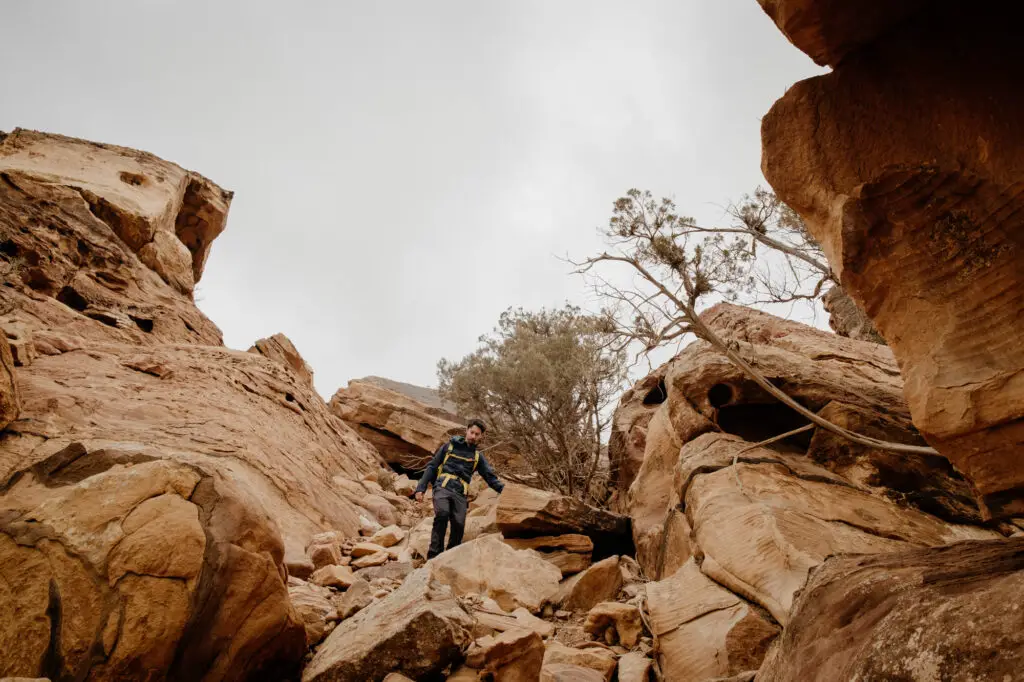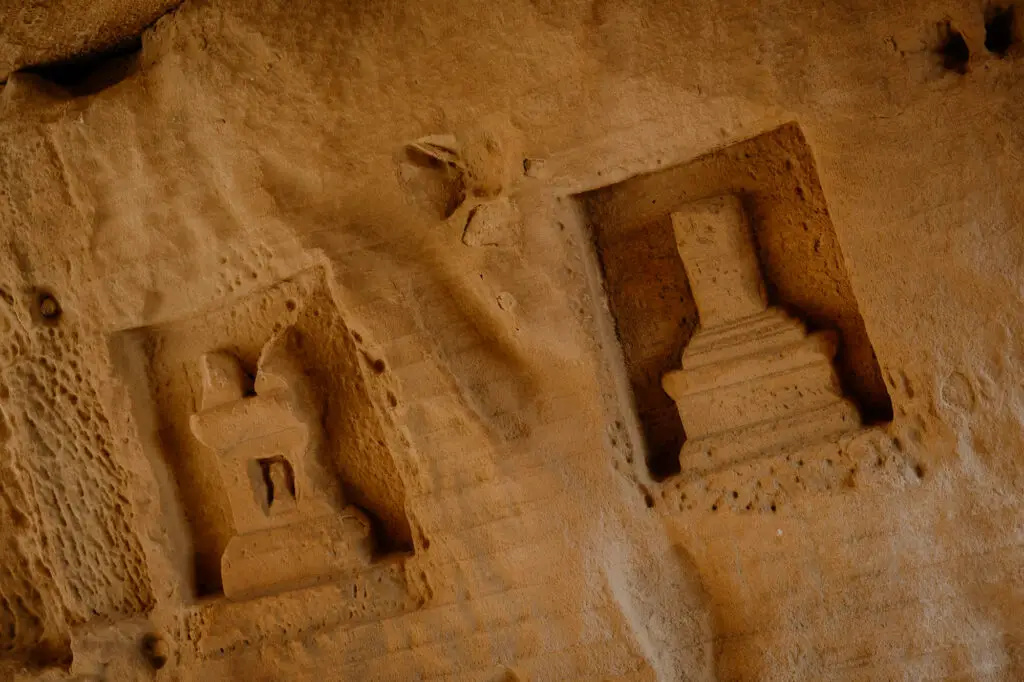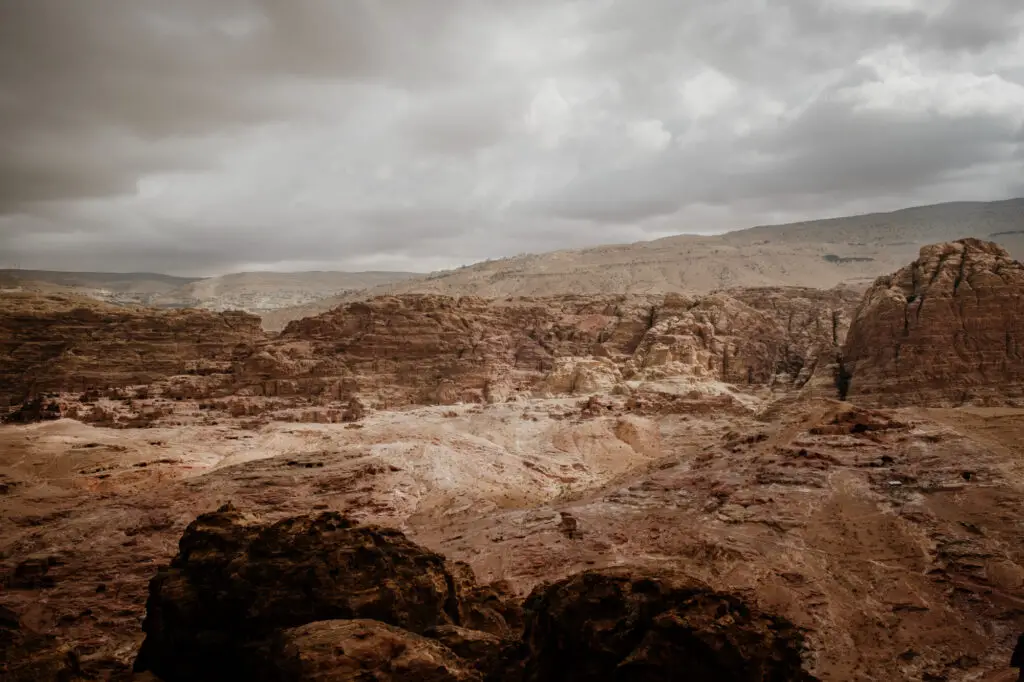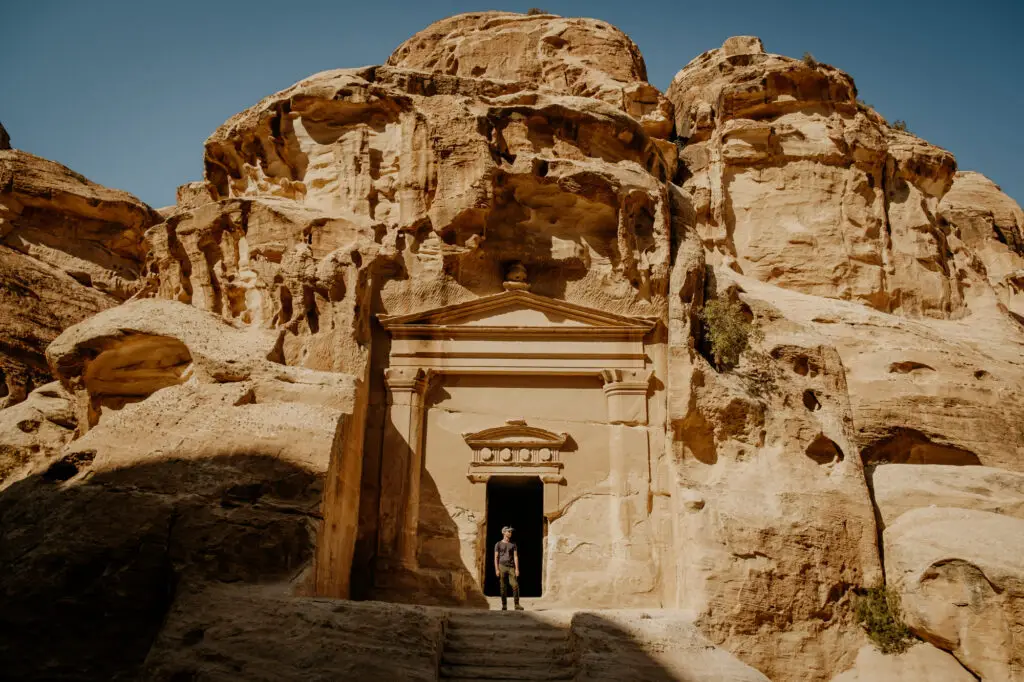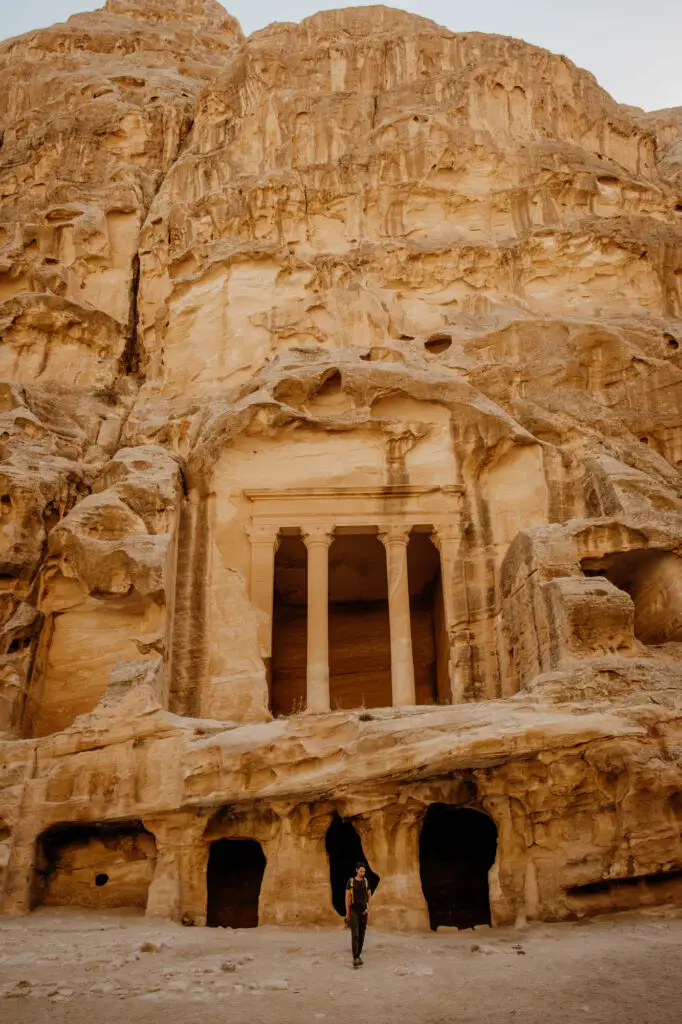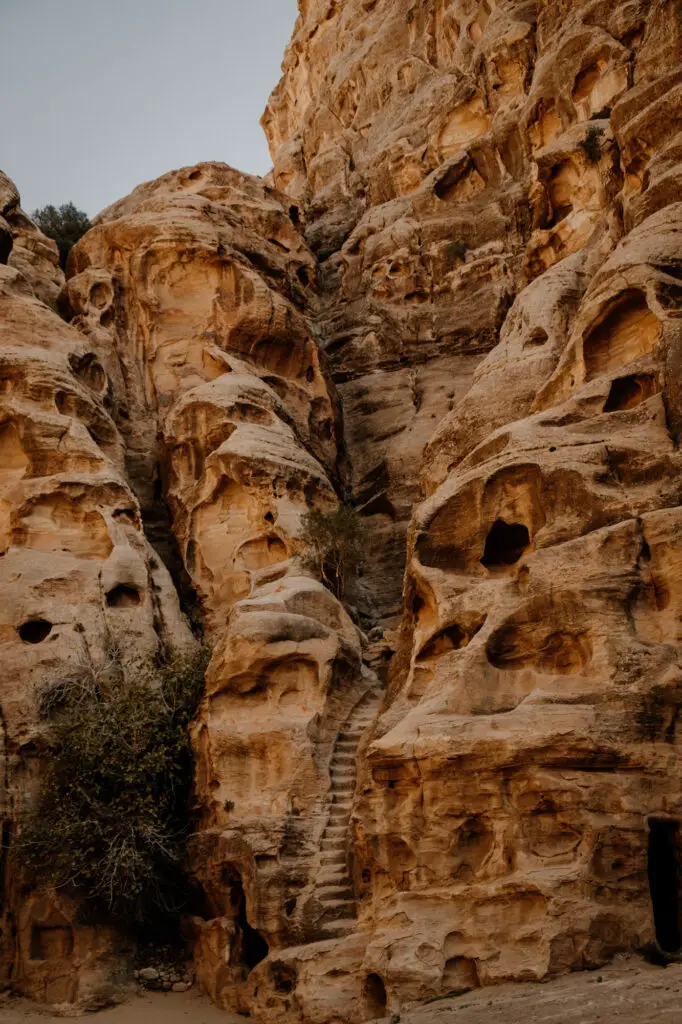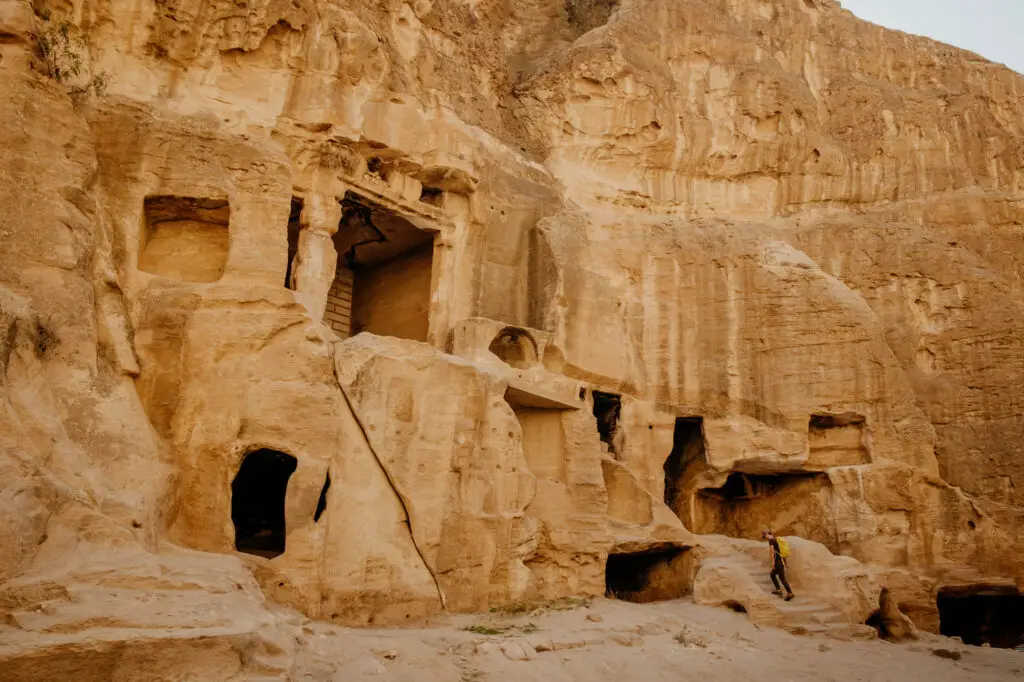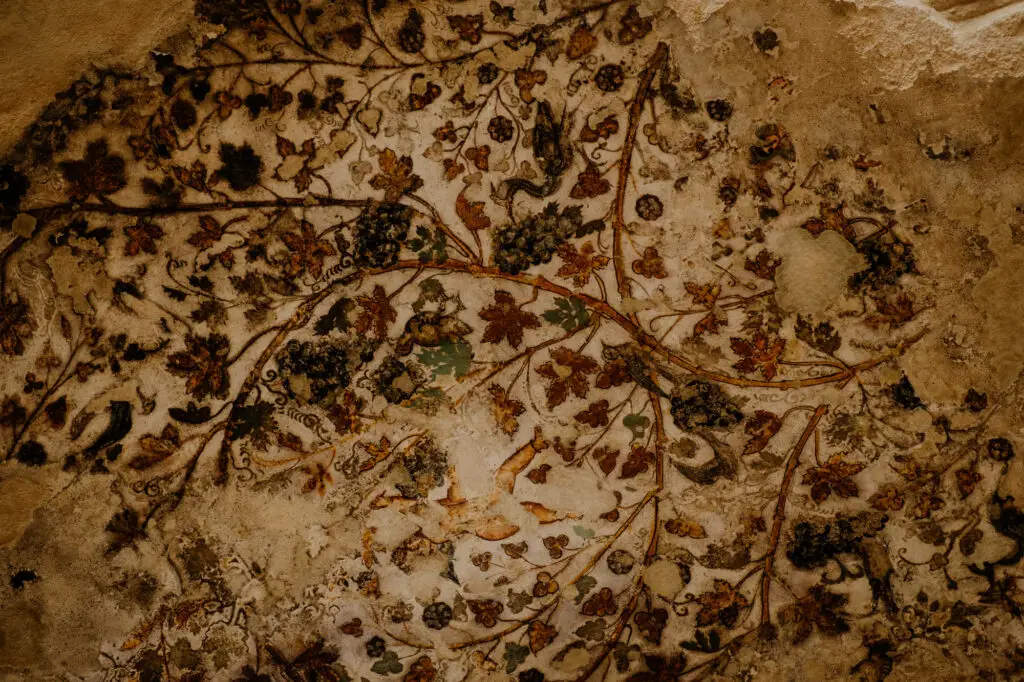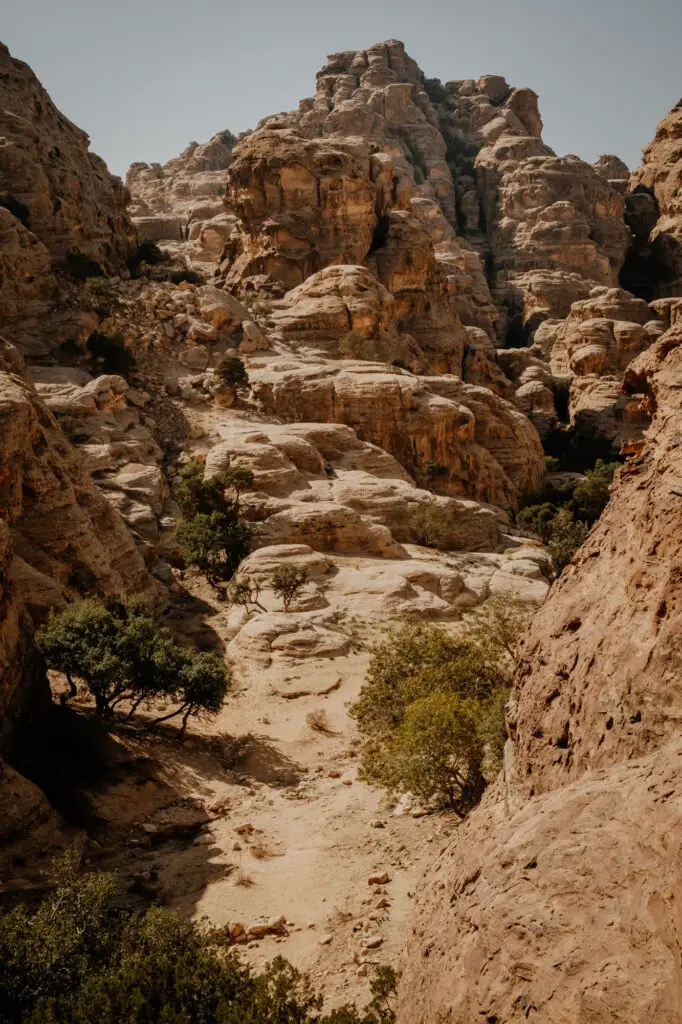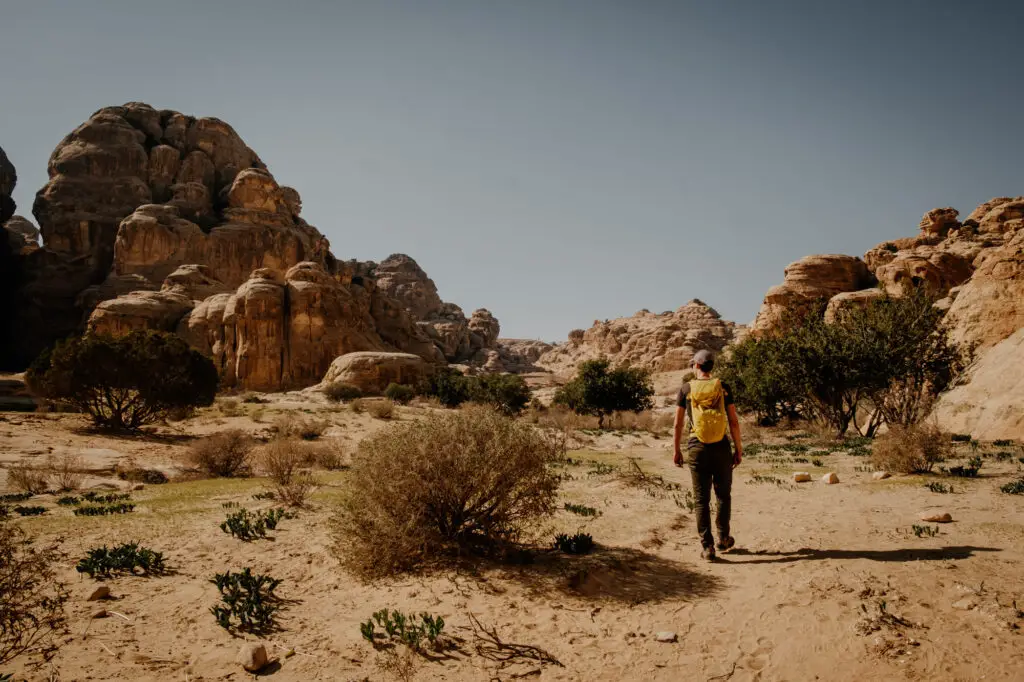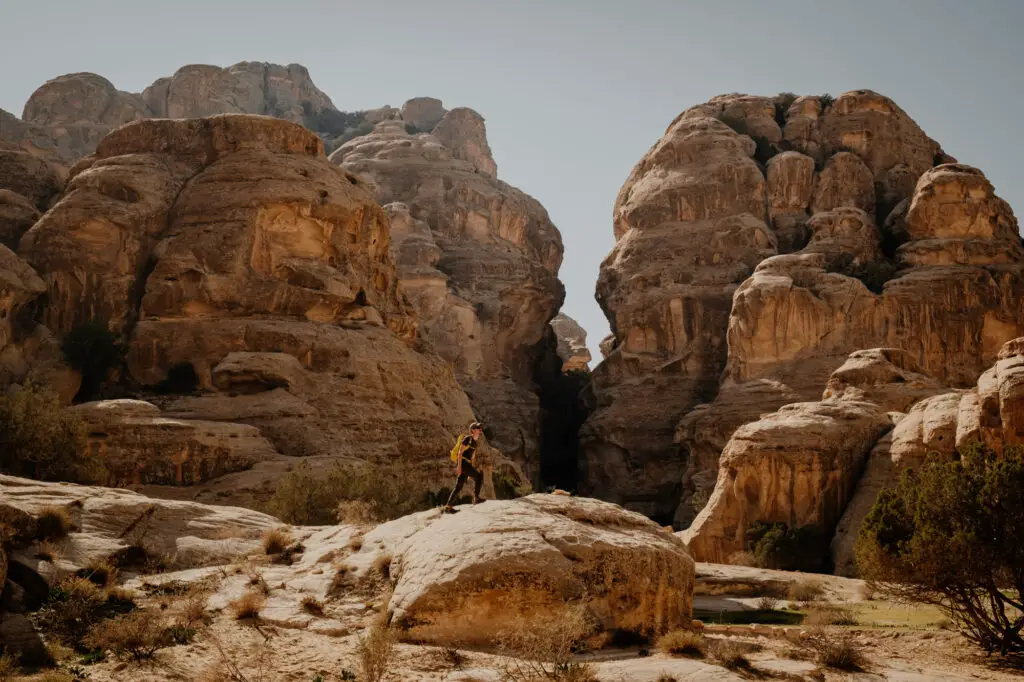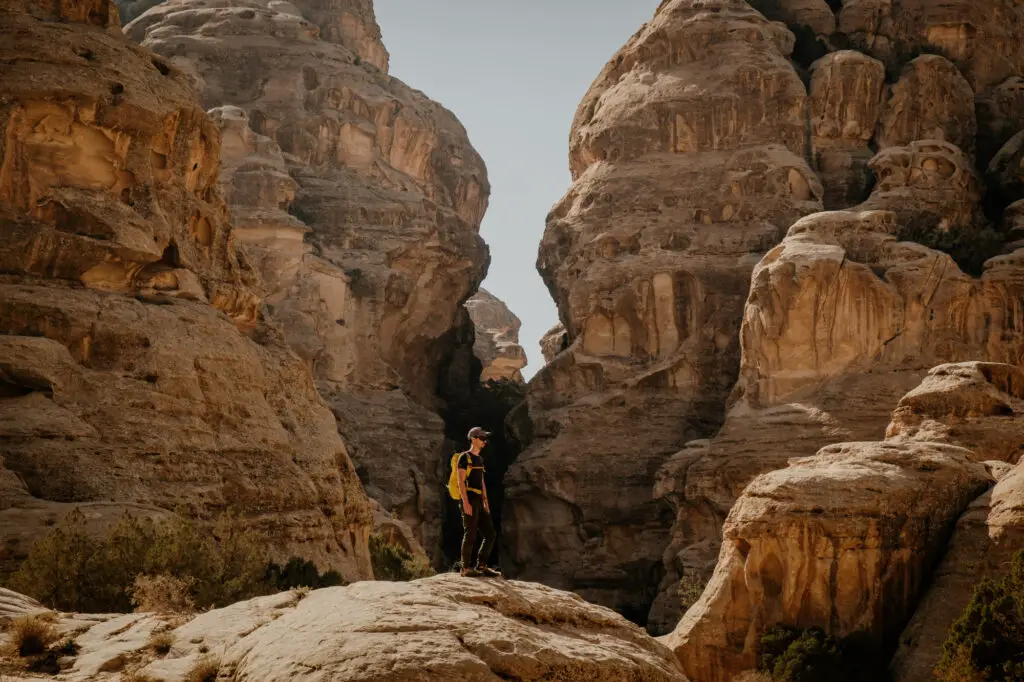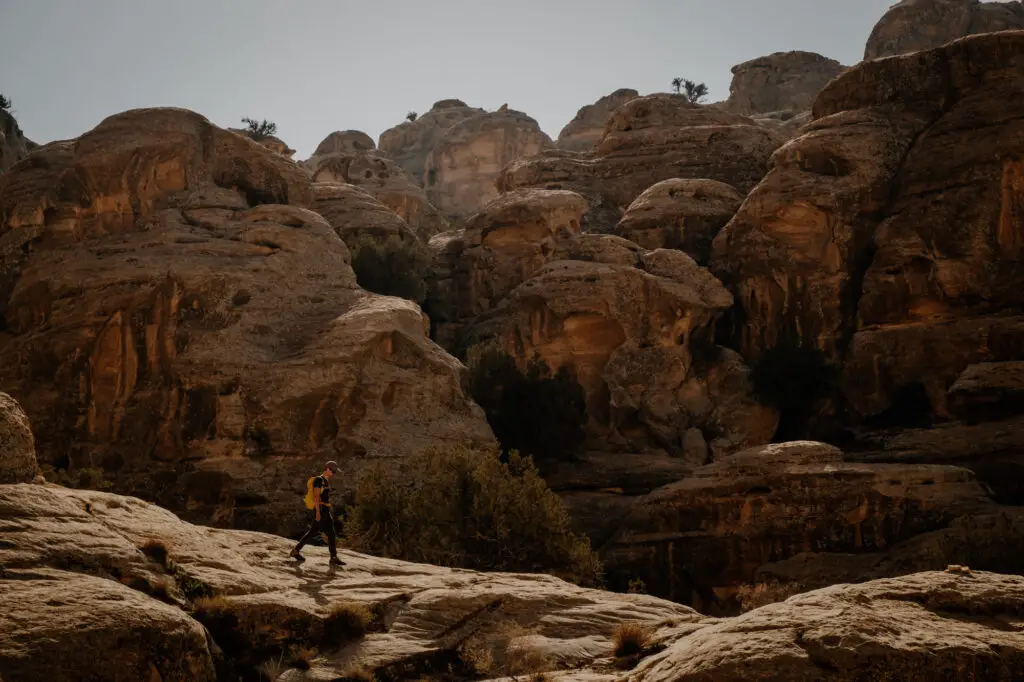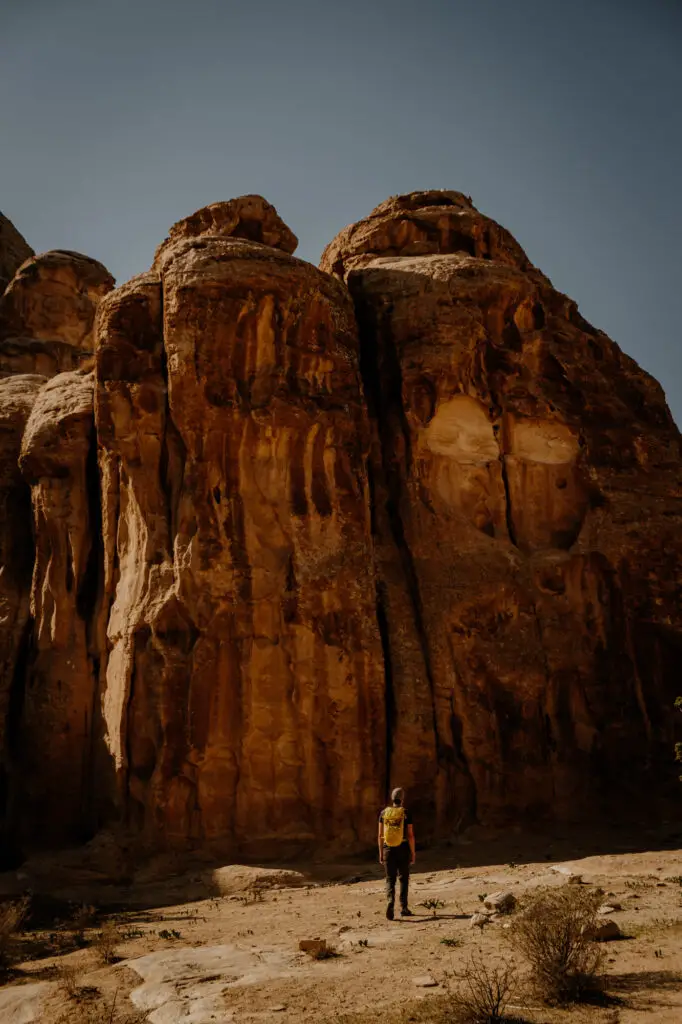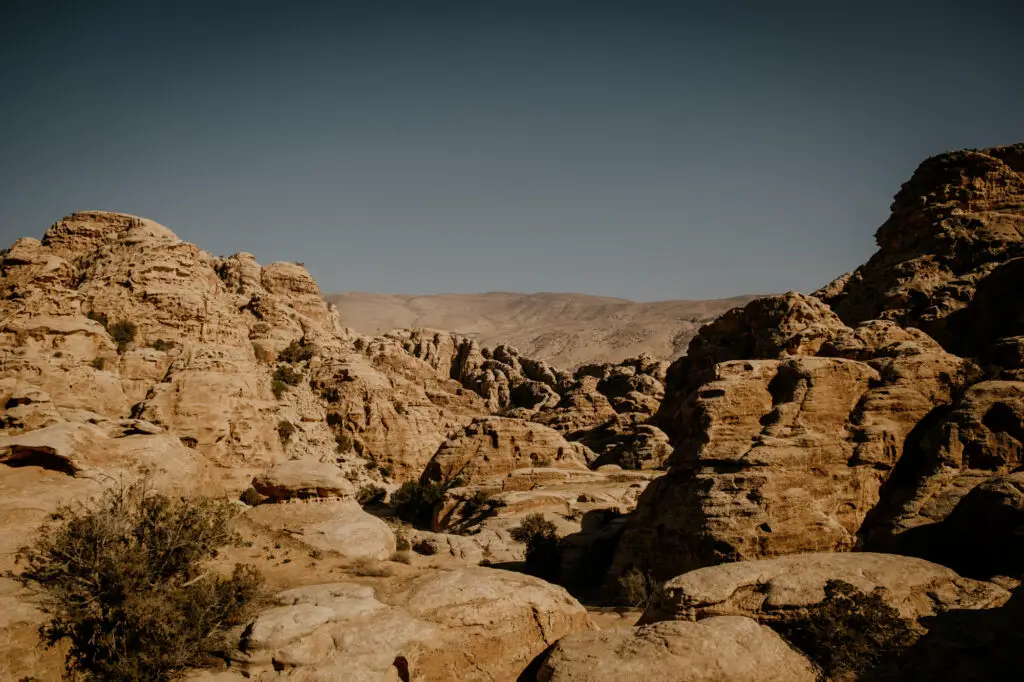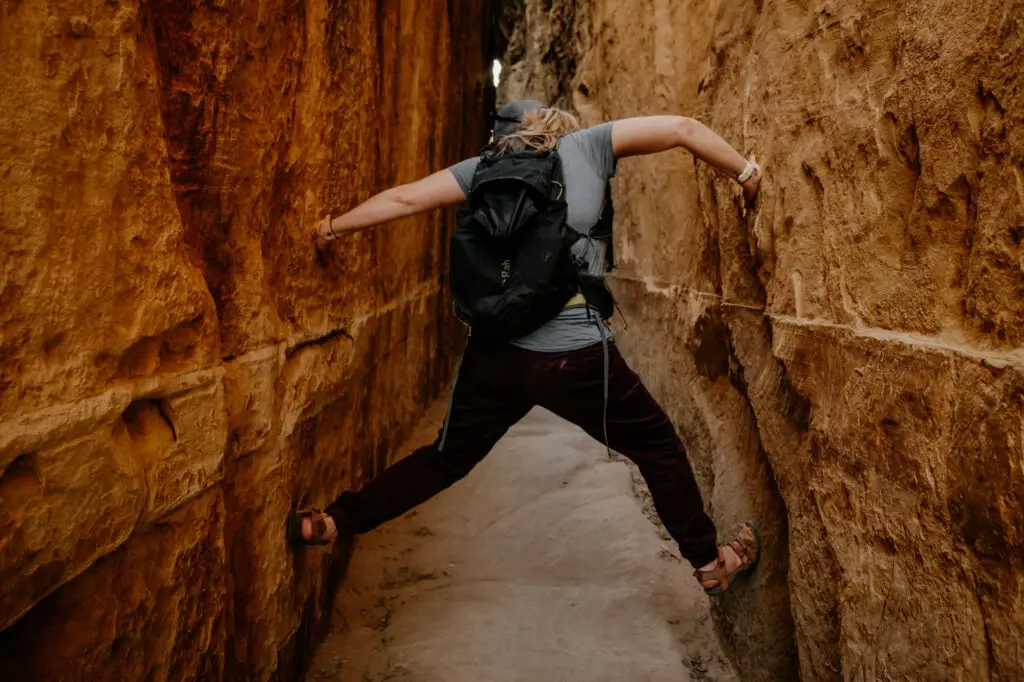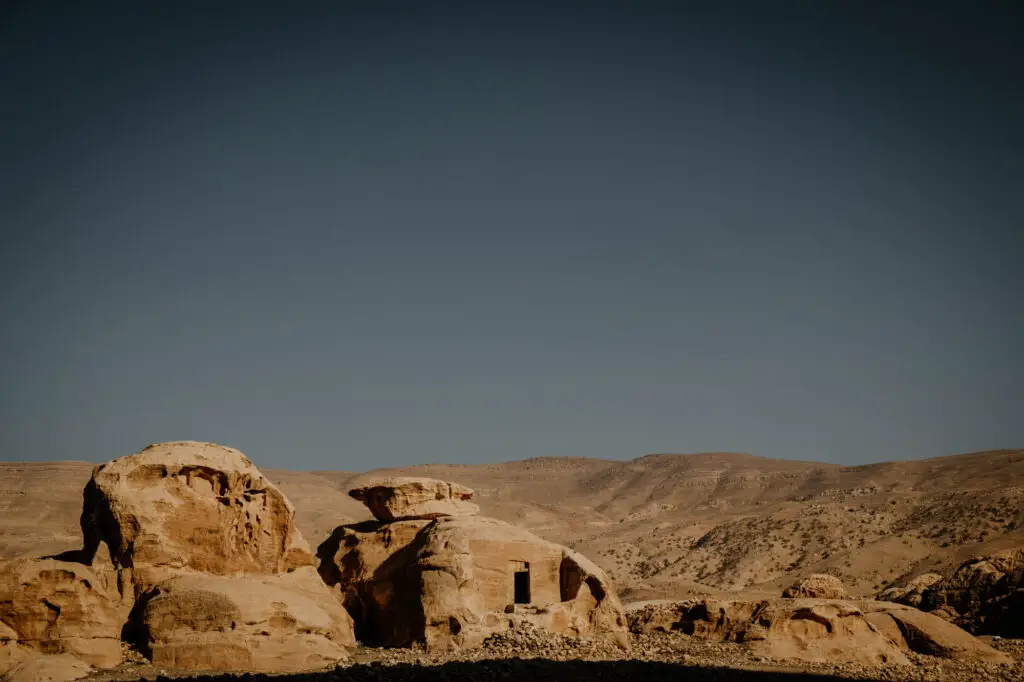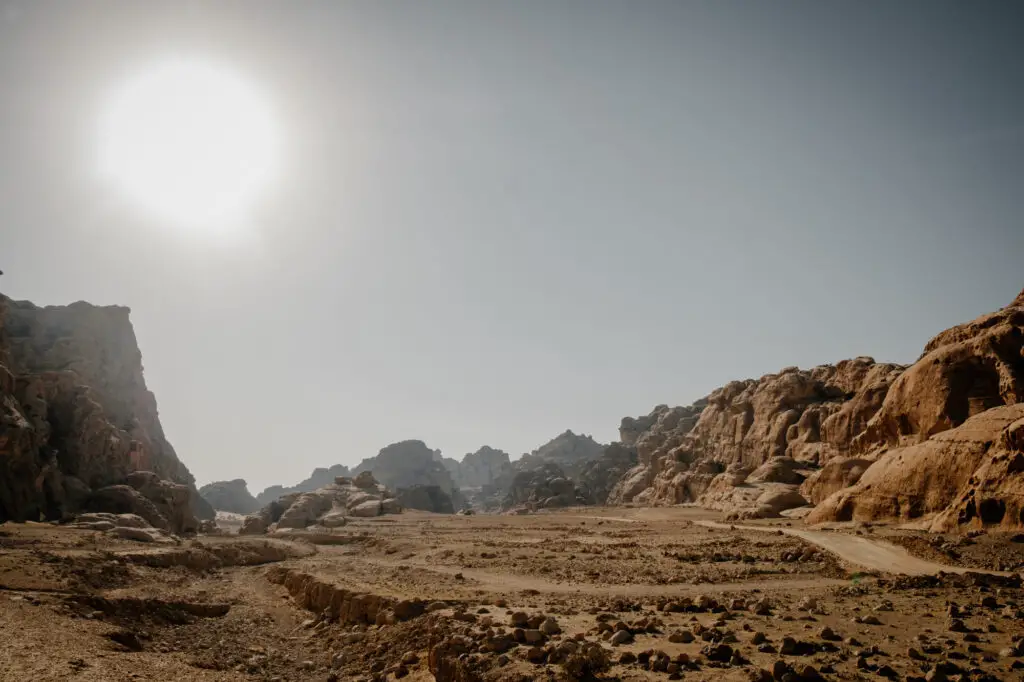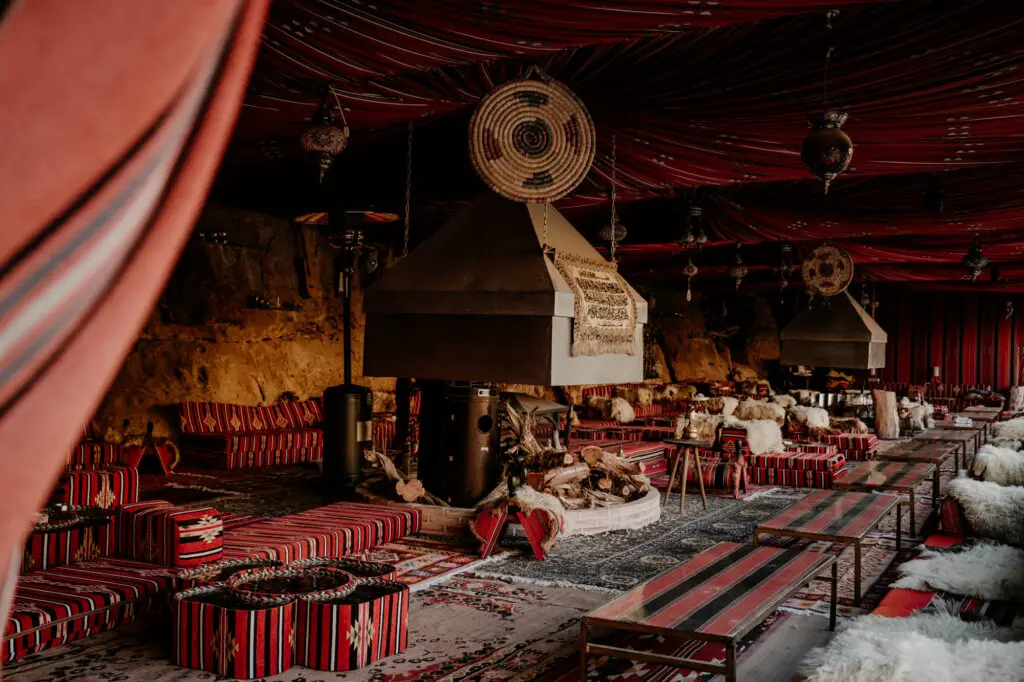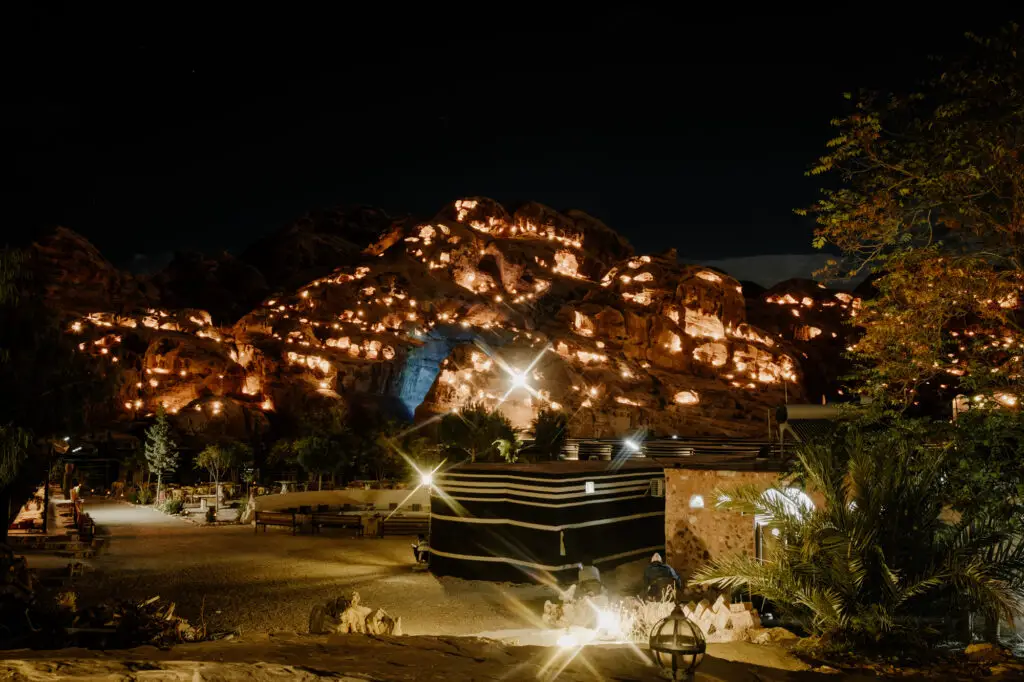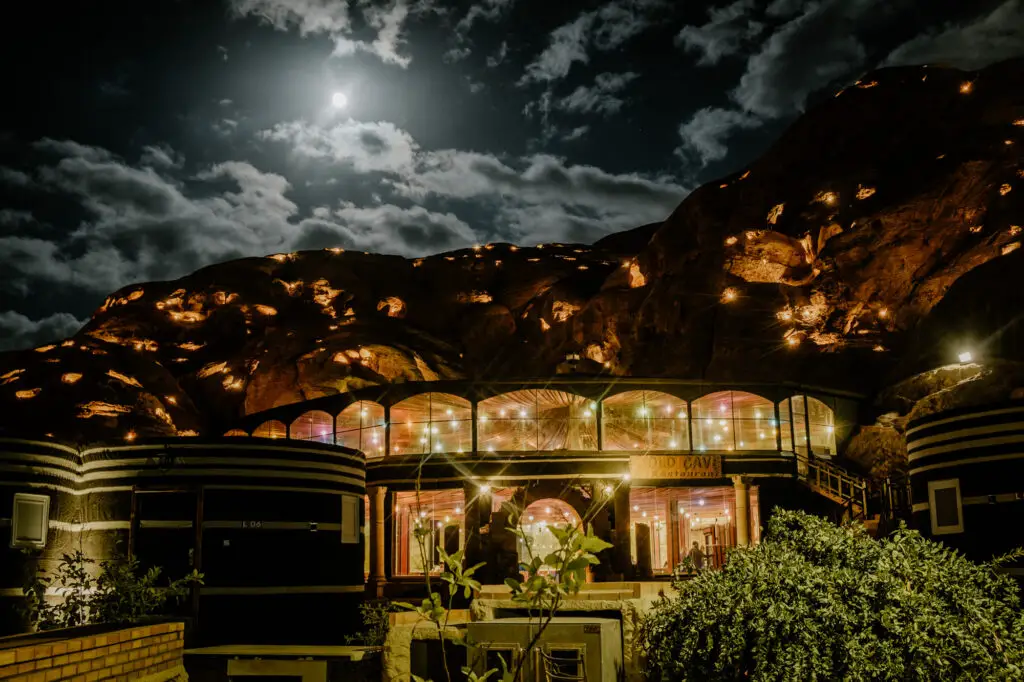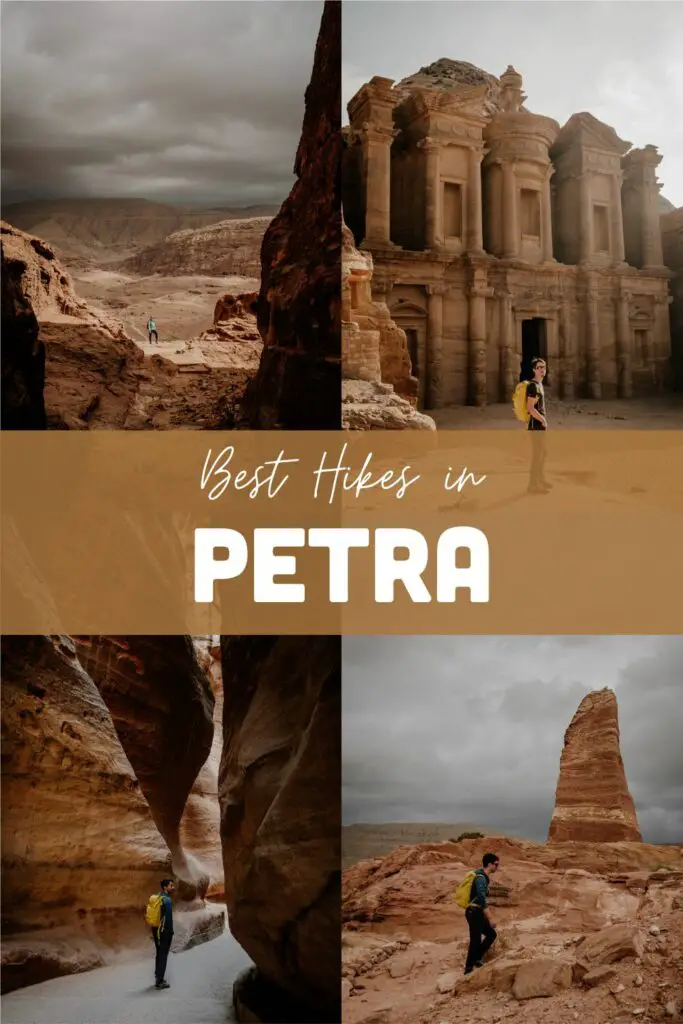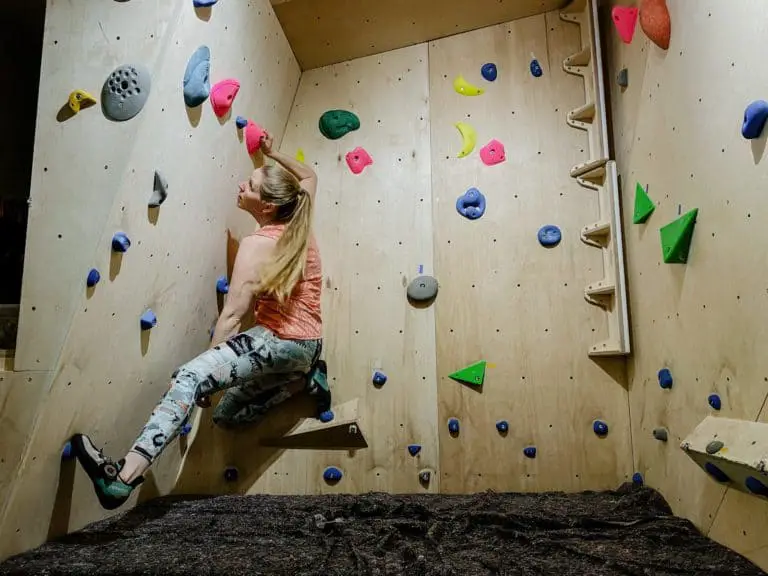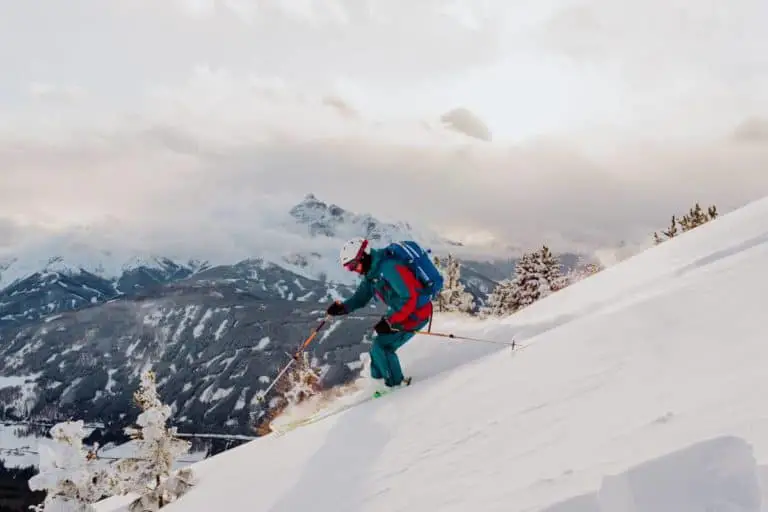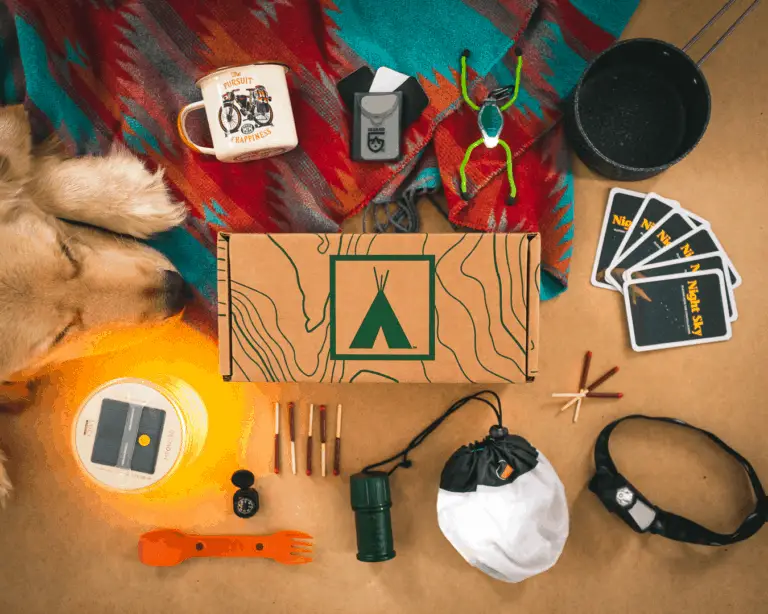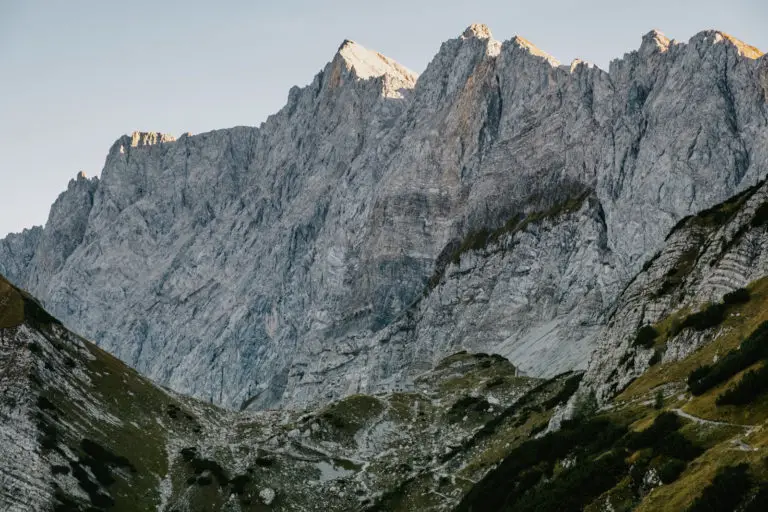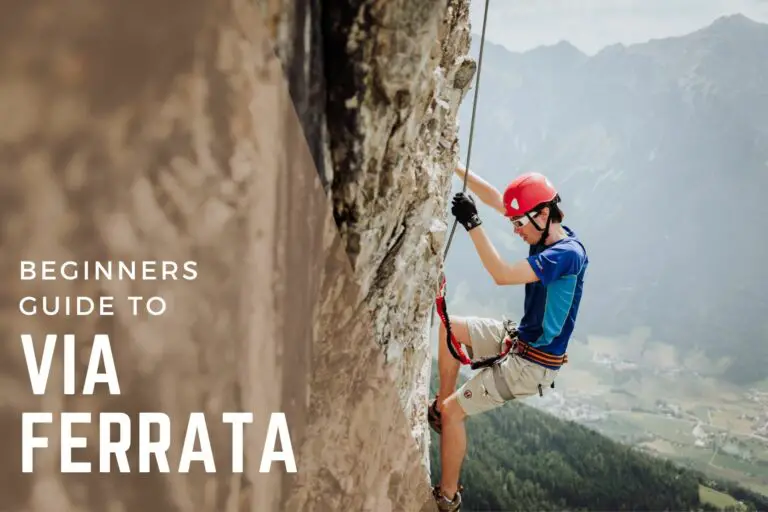10 Best Hiking Trails In Petra
Disclosure: This post may contain affiliate links, meaning I earn a small commission if you decide to make a purchase though my links, at no additional cost to you, which I’ll probably spend on more outdoor gear and travel to cool places.
Table of Contents
Hiking in Petra is the best way to see this incredible ancient UNESCO World Heritage site. The site is enormous, but if you’re reasonably fit and are keen to explore as much of it as possible, then there are so many incredible hiking trails.
The Best Hiking Trails in Petra (with GPS Maps)
Below I’ll talk you through the 10 best hiking trails in Petra, so that you can plan and make the most out of your visit.

Petra Main Trail
Distance: 8km / 5 miles
Elevation Gain: 330 meters / 1080 feet
Difficulty: Easy
The Main Trail of Petra takes you from the visitor centre in Wadi Musa, past the Treasury and all the main sights, all the way to the Qasr al-Bint and the Basin restaurant. The trail is pretty flat, and slightly downhill on the way in (which means slightly uphill on the way back).
The Main Trail is the most popular trail in Petra (for many people, it’s the only one they do), and it can get busy. If you want to experience it with the fewest crowds, aim to enter the park when it opens at 6am. Going in early not only has the benefit of fewer people, but it also means you can do as much exploring as you can before it gets too hot.
Ad-Deir (Monastery) Trail
Distance: 2.5km / 1.6 miles
Elevation Gain: 215 meters / 700 feet
Difficulty: Moderate/Hard
The Monastery trail starts where the main trails ends in the centre of Petra, by the Basin Restaurant. While the trail out to the Monastery isn’t super long, you have to hike up 800 steps, making it moderate to difficult for some people.
Ad-Deir (Monastery) Trail – The Back Route
Distance: 3.6km / 2.25 miles
Elevation Gain: 125 meters / 400 feet
Difficulty: Moderate
The hike to the Monastery from the main entrance of Petra is a pretty long hike, with 800 steps to climb, but there is another, easier way to do it, and that’s via the “back route” (check the FAQs below for how to find it).
The trail hugs the mountainside as you slowly climb up and around the mountains of Petra toward the Monastery. While there are still many steps on this route, they are more spread out and with flatter sections in between.
Once you reach the Monastery, you then descend the 800 steps into the centre of Petra, ending at the Basin Restaurant. From here, we followed the main trail back to the main entrance and took a taxi back to Little Petra (as that’s where we were staying).
High Place Of Sacrifice Trail
Distance: 3.5km / 2.2 miles
Elevation Gain: 165 meters / 540 feet
Difficulty: Moderate/Hard
Most people start the High Place of Sacrifice Trail from the street of facades on Petra’s main trail. From this end, you have to ascend to the highest point with an almost continuous staircase winding back and forth until the highest point. At the top, you’re rewarded with incredible views over the Street of Facades, as well as the High Place of Sacrifice and the Obelisks. From here you can turn back around and return the way you came up (many do), but if you continue on the trail, you’ll pass some more incredible sites, including the Roman Soldier’s Tomb and the Garden Triclinium.
We actually did this trail in reverse, starting from behind the Great Temple. While there were still a lot of stairs to climb, the ascent is more stretched out than if you do it from the Street of Facades.
Al Kubtha (Treasury Viewpoint) Trail
Distance: 3.5 km / 2.2 miles
Elevation Gain: 250m / 820 ft
Difficulty: Hard
This out-and-back trail starts just past the Street of Facades and follows steep staircases up to a high point that overlooks the magnificent Treasury. On the way up, you’ll also pass viewpoints that look down over the Colonaded Street and the Theatre.
The end of the trail, with the Treasury viewpoint, is inside a small cafe set up at the top. If you want to take a photo of the view from here, you have to buy a drink. However, 100m before you get to the cafe, you also have incredible views down over the Treasury that are completely free.
Umm al-Biyara Trail
Distance: 4km / 2.5 miles
Elevation Gain: 350 m / 1150 ft
Difficulty: Hard
Umm Al-Biyara is the highest mountain in Petra, and from the top, you’ve got stunning views across the site. Although the hike is on the tourist map you get from the visitor centre, it seems like very few people do this trail. On the day we did, there was not a single other person on the trail (there were about 30+ goats though!).
Like most of the hiking trails in Petra that take you up to higher elevations, you’re almost exclusively hiking up stone steps. Finding the start of the hike is the most challenging part, as you leave the wider gravel road and head towards where the stairs start. At the top, the summit plateau is relatively flat. Up here you’ll find some ruins and hidden at the far west corner, a little scramble down, you can find some hidden, almost pristine carvings underneath a large boulder.
Little Petra
Distance: 3km / 1.9 miles
Elevation Gain: 150m / 490 ft
Difficulty: Easy/Moderate
Little Petra is the perfect place to explore if you’ve got half a day spare when you’re visiting Petra. Little Petra is free to enter and look around. Inside one of the buildings carved into the rock here, you’ll find the most incredible fresco painted on the ceiling. Most of the buildings are close to the entrance, but you can hike further into the valley if you want to.
Other Trails In Petra that we didn’t Do:
Al-Madras Trail
Distance: 1.5 km / 0.7 miles
Elevation Gain: 50 m / 165 ft
Difficulty: Moderate
This short trail begins beside the Obelisk Tomb, on the road that leads to the Siq, and is the trail used to film Indiana Jones and the Last Crusade.
It is recommended to hike this trail with a guide.
Jabal Haroun Trail
Distance: 7.5 km / 4.7 miles
Difficulty: Hard
This long and demanding trail in Petra is a Pilgrimage route that leads to a shrine on Jebel Haroun that is said to be the burial site of Aaron, brother of Moses. At the site you’ll find a 14th Century shrine.
Sabra Trail
Distance: 10 km / 6.2 miles
Difficulty: Moderate
This long trail takes you away from the busy crowded streets of Petra. It follows an ancient trade route that passes many Nabatean tombs.
Planning Your Time In Petra
How Much Time Do You Need in Petra?
In November 2022, we spent two and a half days exploring the best hiking trails in Petra, Jordan. For us, this was an ideal amount of time, although we do feel like we could have seen almost everything in a day if we didn’t want to hike all of the trails, and just cover the main sights.
We arrived in the afternoon on our first day, so we decided to explore Little Petra that afternoon. A half-day is more than enough time to visit Little Petra. I also recommend visiting here before going to Petra, as it could seem small and underwhelming in comparison. However, we did still enjoy Little Petra as there was barely anyone else there.
On our first full day, we covered the main trail and the monastery. We entered Petra from the rear entrance (near Little Petra), and we hiked from the monastery all the way through Petra, ending with the Treasury and the Siq. We also hiked the Al Kubtha trail up to the Treasury viewpoint.
When Is The Best Time To Visit Petra?
The best time to visit Petra is in the Spring (April-May) and the Fall (September-November). Temperatures in these months are cooler than the summer months, but not too cold (mid-winter in Petra can fall below freezing).
How Difficult Are The Trails in Petra?
The map that you get from the visitor centre rates the trails as easy, moderate, or hard. Petra is visited by a huge variety of people, some fit and healthy, others not so much, so I understand why they mark some of the trails as hard.
However, as two (relatively) young, fit and experienced hikers from the Alps, we found even the hardest trails to be moderately difficult at most. The difficulty comes from the number of steps you have to climb and the heat/sun exposure.
One of the biggest hazards of hiking in Petra is after rainfall when water can sweep through the wadis (valleys, canyons, and ravines), which can be extremely dangerous.
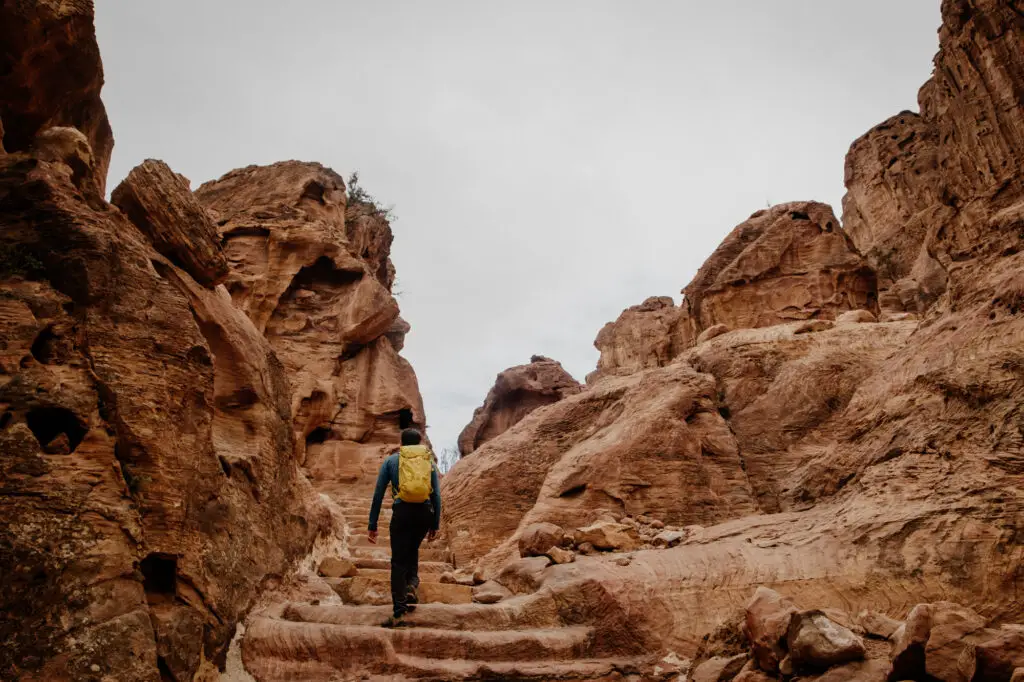
How Do You Find The Back Entrance To Petra?
While you have a couple of options when it comes to finding the back entrance to Petra, the most straightforward is from Little Petra.
From Little Petra, you can either hike or (what we recommend) pay for the jeep shuttle to take you closer to the start of the back trail to the Monastery. Taking the jeep costs 5 JOD per person and saves you 2 hours of hiking. If you’re staying in Wadi Musa, you can take a taxi to Little Petra, which costs around 20 JOD (ask before you get in as some drivers wanted to charge us more).
If you haven’t already exchanged your Jordan Pass voucher for your Petra entrance ticket at the main visitor centre, you can do this at the ticket kiosk at Little Petra.
Alternatively, you can get a taxi to drop you off at the roadside near the trail between Wadi Musa and Little Petra, but it isn’t so easy to find.
Tickets For Petra
It is possible to purchase tickets for Petra at the visitor centre, however, if you are vising Jordan on holiday, we highly recommend purchasing the JORDAN PASS. The Jordan Pass is a special tourist pass that includes your visa for entry into Jordan, as well as entrance to most of the main sites. When purchasing the Jordan Pass, you can choose to have 1,2 or 3 days in Petra.
When you arrive in Petra, you’ll need to show your Jordan Pass at the ticket office (either the one at the main entrance or at Little Petra), and exchange it for a separate ticket for Petra. Whilst exploring Petra, you’ll need to have your ticket on your person, as sometimes officials inside the site can check.
Where Is The Best Accommodation In Petra?
We chose to stay across from Little Petra, at the Little Petra Bedouin Camp. We chose this location as we saw how huge Wadi Musa was, and unless you can afford to stay at one of the hotels near the entrance to the visitor centre, it may be a fair walk to the entrance. If you chose a hotel further away from the entrance to Petra in Wadi Musa, you may want a taxi to take you to the entrance, as the roads are steep and hiking through Petra all day can be pretty exhausting.
Recommended 1-Day Petra Itinerary (with Map)
If you only have one day, and you want to see as much of Petra as possible, I recommend the following itinerary:
- Enter Petra at 7am from the rear entrance (ticket office is currently at the entrance to Little Petra but a new visitor centre was being built when we were there)
- Take the 4×4 shuttle for 5 JOD per person to the start of the trail to the Monastery
- Hike to the Monastery, then continue into Petra, following the main trail in reverse, all the way to the front entrance.
- Once you get to the centre of Petra, you can decide if you want to hike the Al Kubtha trail for views of the Treasury from above.
- Once you exit Petra, if you’re still in time, the Petra Museum is only small but well worth a visit.
Recommended 2-Day Petra Itinerary (With Map)
Complete the single-day itinerary shared above on day 1. For day 2, do the following route:
- Enter Petra from the main entrance. Get there early if you want to hike the Siq and see the Treasury before it gets really crowded.
- Hike the Umm Al Biyara trail
- Hike the High Place of Sacrifice trail in reverse (starting from behind the Great Temple, where you end your Umm Al Biyara hike)
- Hike back out the same way you came in, through the Siq.
- If you have an extra 1/2 day to hard, you can add in Little Petra too.


